32 fun facts about bloodhounds
The king of tracking dogs, the bloodhound’s greatest asset is its incredible nose. Here are 32 fun facts about bloodhounds.
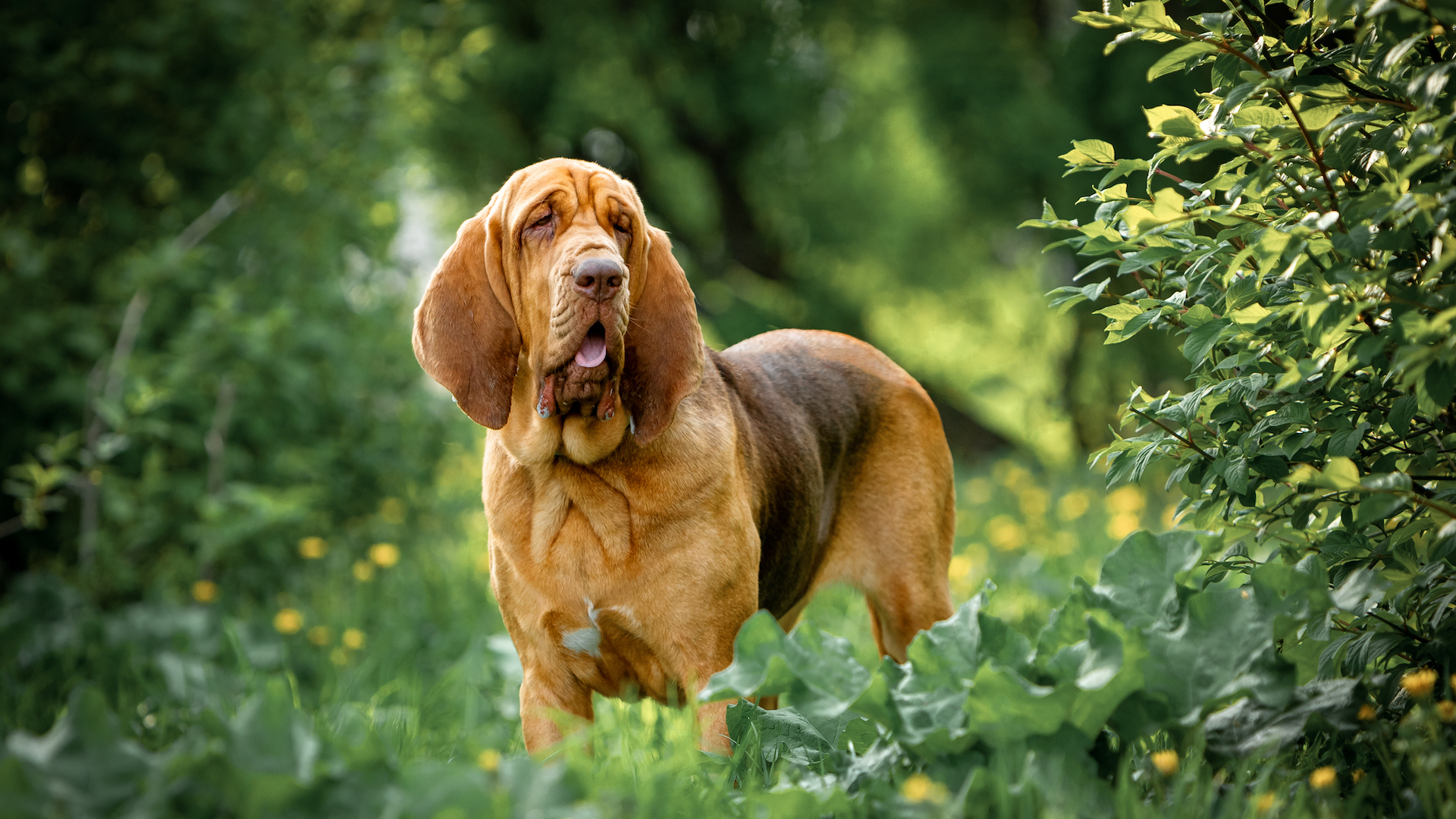
The bloodhound is one of the oldest dog breeds on record, going back to at least medieval times. Sadly, they are considered a vulnerable breed nowadays, despite having the most incredible skills as a sleuth hound – their alter ego.
While they might not be that highly ranked in the intelligence stakes, that’s probably because they have one mission in life: tracking a scent. This they do to perfection, making them highly sought after in criminal cases, finding lost children – or just providing fun following the scent of a human runner out drag-hunting.
With their wise wrinkles and dignified look, they are not only a superb working dog but a delightful family friend: gentle with children (careful they don’t bulldoze them with their vast size) and keen for cuddles. Don’t forget, though, that this is a breed that loves to be in a pack, so don’t leave him on his lonesome. If you do, be sure to leave out one of the best dog puzzle toys.
Let’s find out more fun facts about the brilliant bloodhound.
32 fun facts about bloodhounds
1. The “sleuth” hound
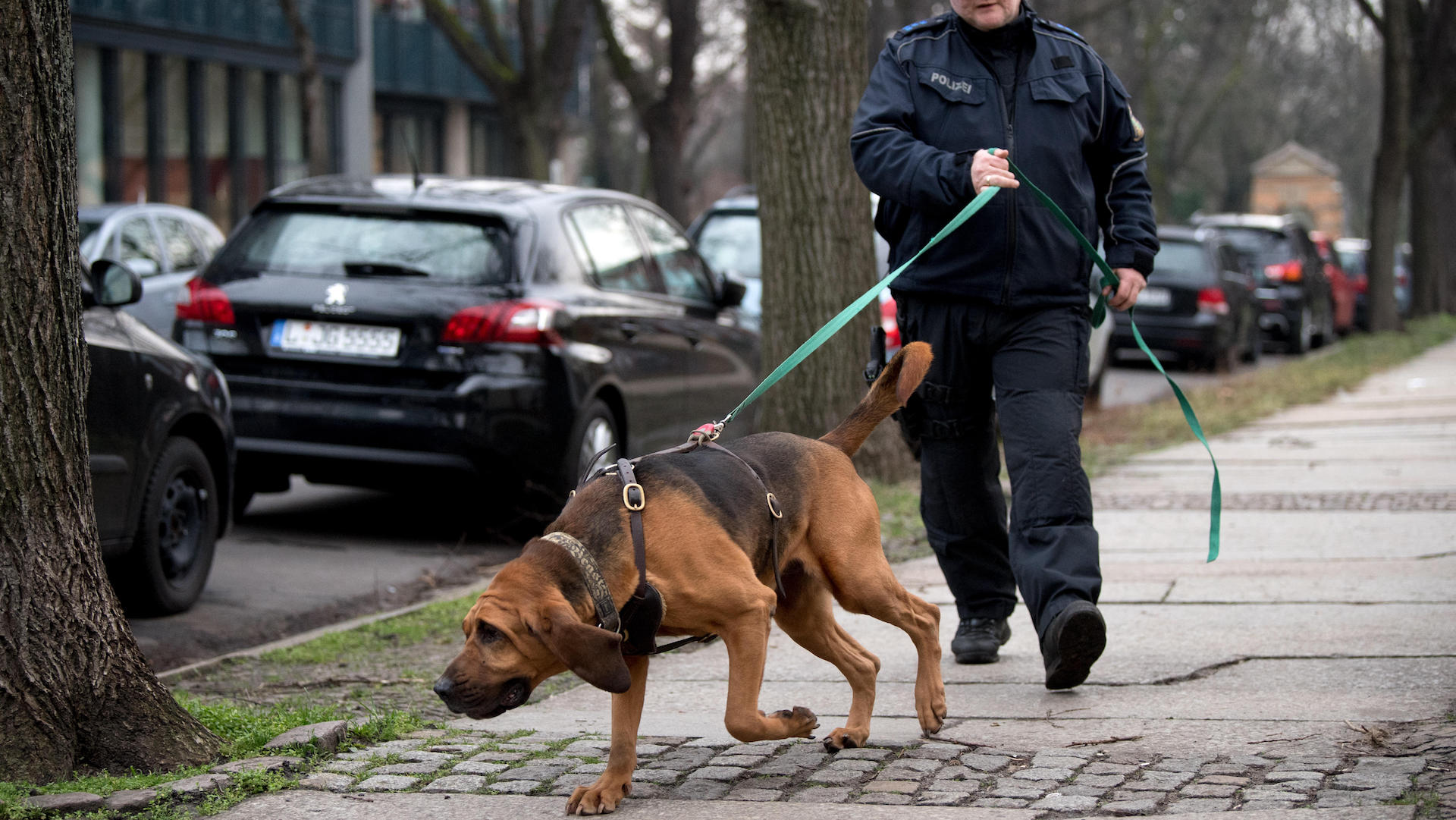
The bloodhound is nicknamed the sleuth hound on account of their extraordinary scenting abilities. They are the only breed whose evidence is admissible in court to match crime scene findings to criminals, though they have to be certified tracking dogs, not your average pet Fido!
2. Medieval history
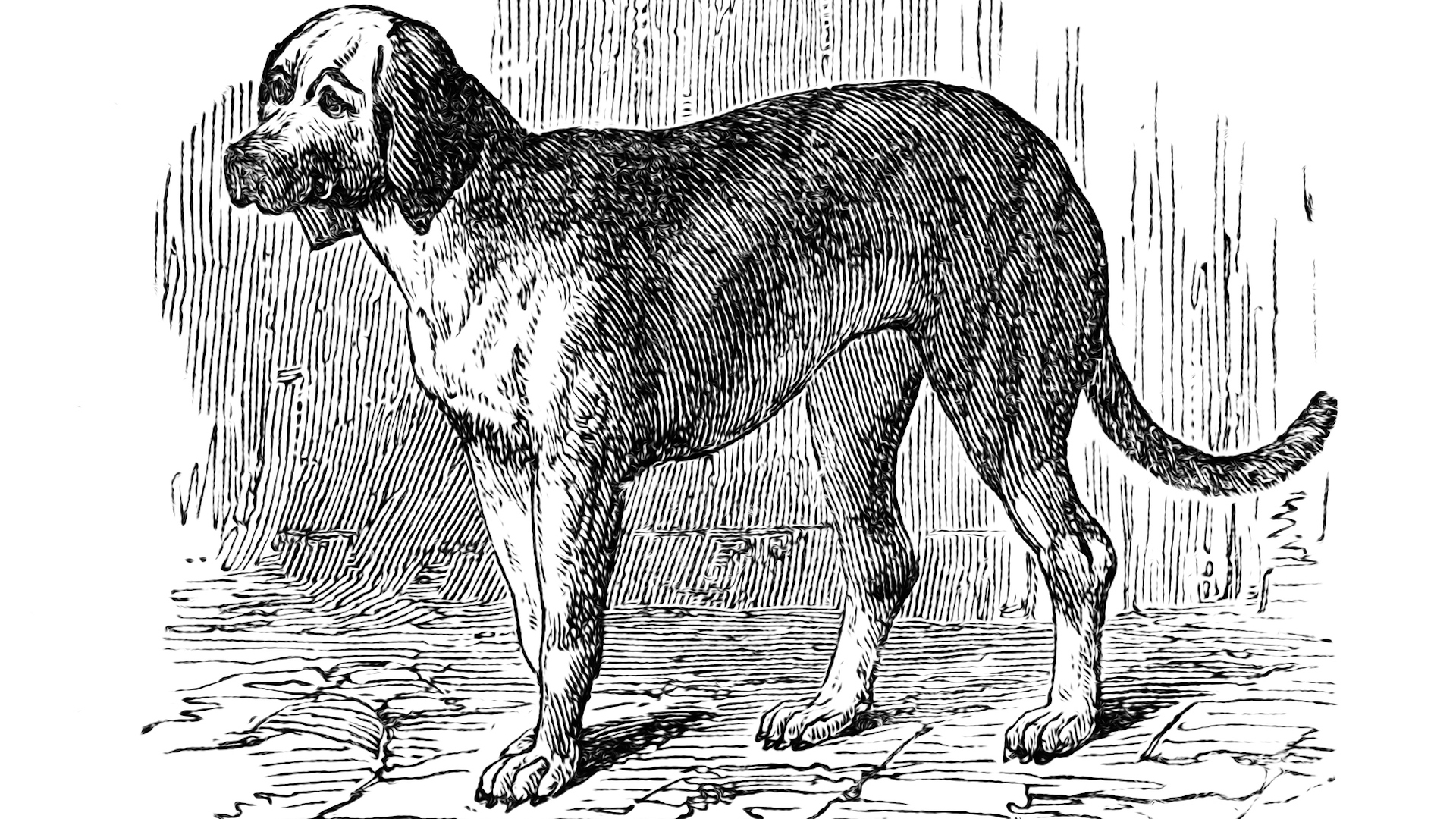
The breed has been developed in Britain since the 12th century, but its ancestry may go back even further, with a connection to a seventh-century Belgian monk – where it was known as the St Hubert breed. This was developed as a hunting dog by medieval noblemen and these are the roots that have now combined to become the bloodhound we know and love. This makes it one of the oldest known breeds.
3. Doggy drool
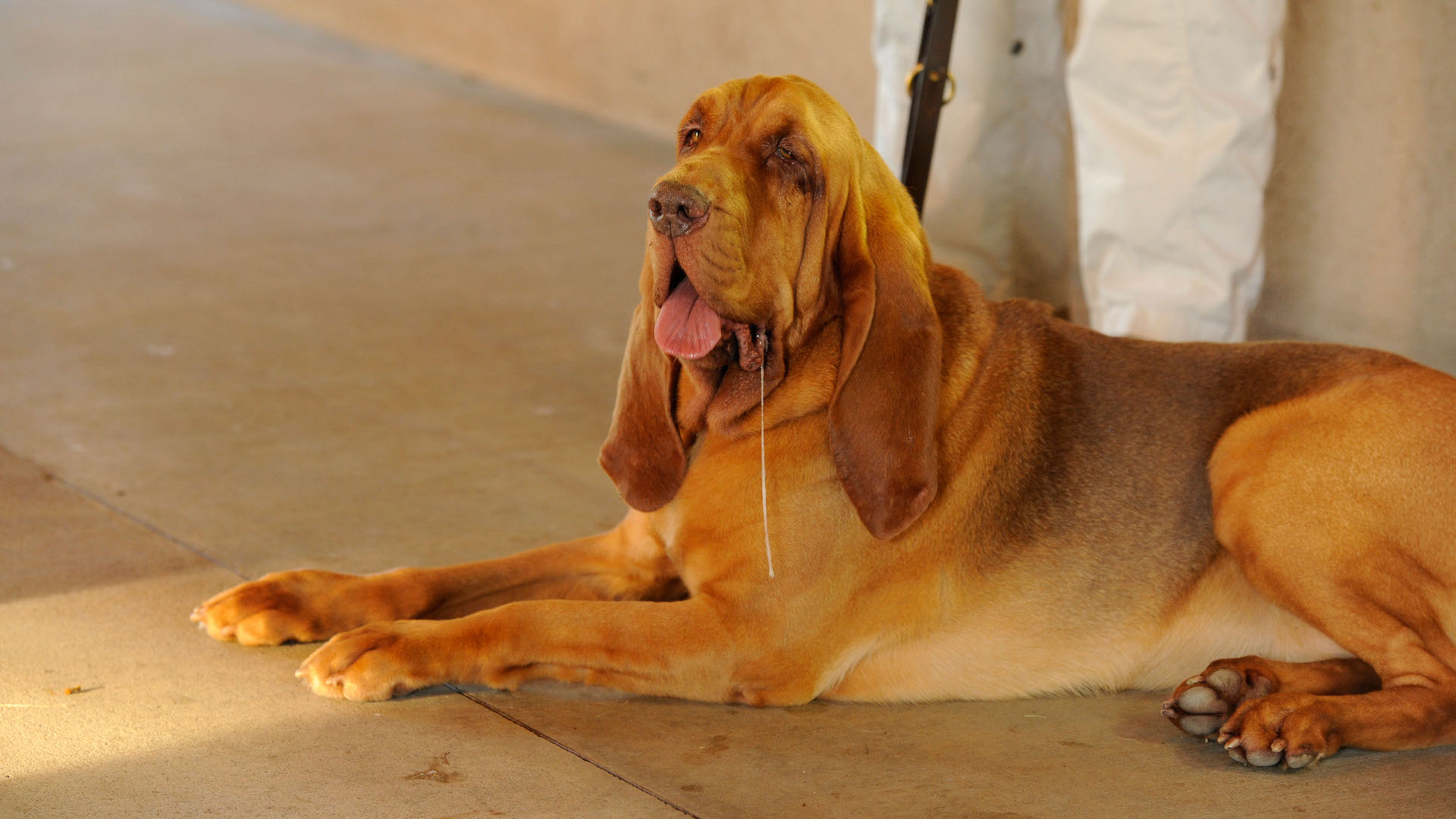
Bloodhounds drool excessively, in common with other breeds with extra large flews (their upper lips, which hang over the jawline). Saliva tends to build up there and has nowhere to go but to drop out. They’re polite enough not to spit! But the drool is slimy and messy and if not cleared up it can dry as hard as cement.
PetsRadar Newsletter
Get the best advice, tips and top tech for your beloved Pets
4. A hound on the scent
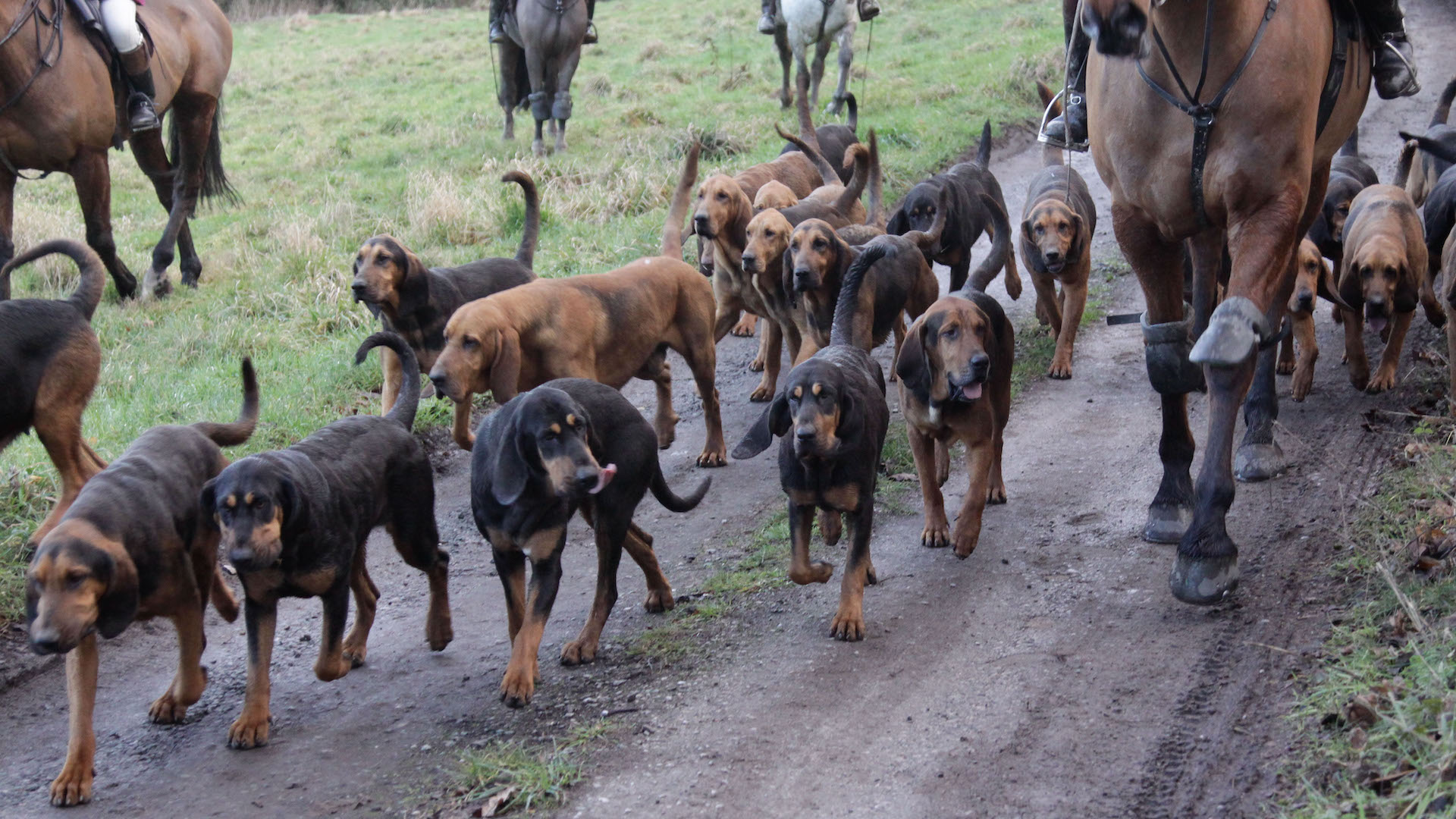
Hound breeds are a distinct group of dogs that have an exceptional ability to hunt and track live prey and there are two main types: sight hound and scent hound. The bloodhound, with its excellent nose, lies firmly in the scent hound category, and in common with all hounds, has a high prey drive.
5. Dogged yet docile
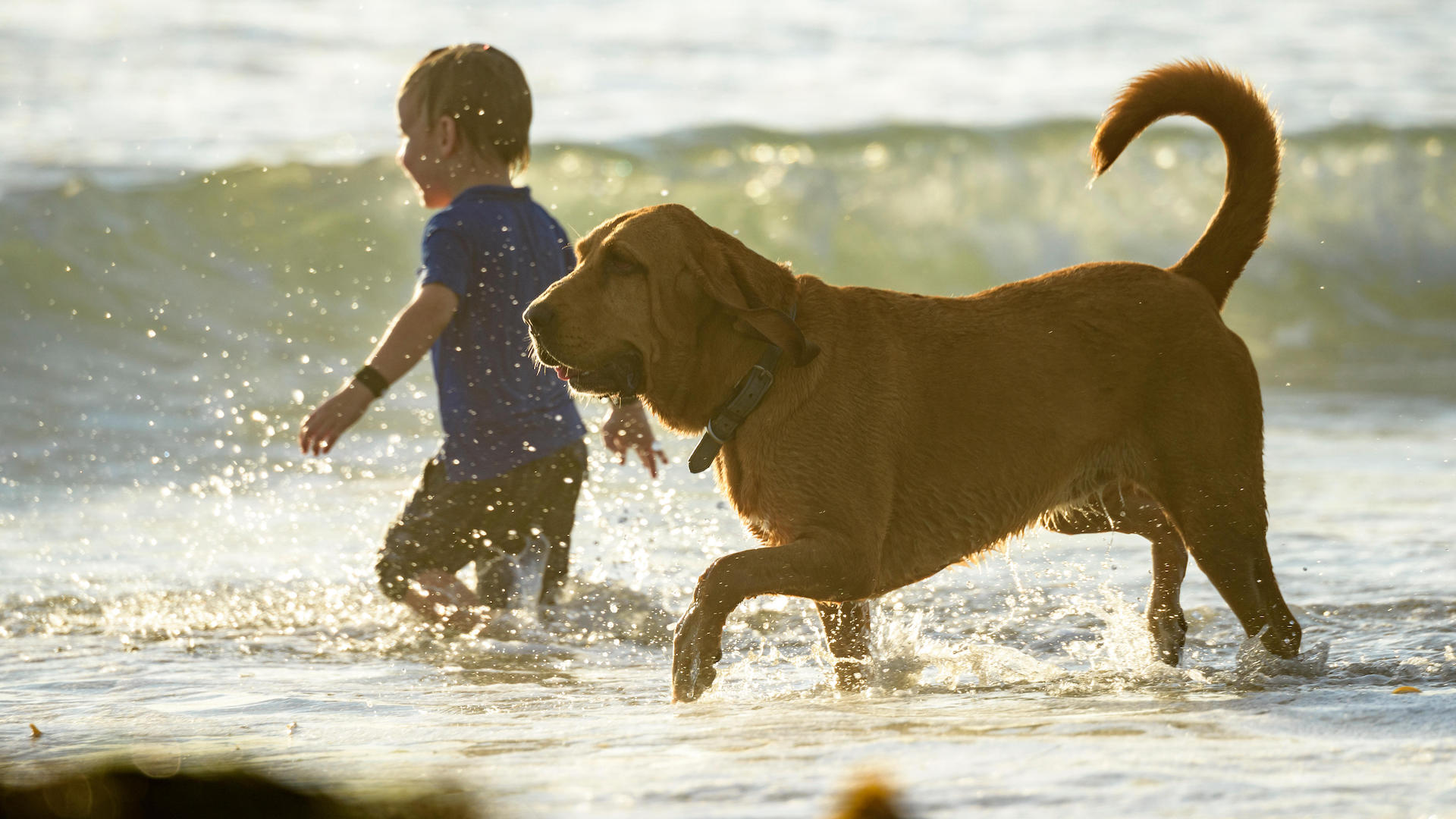
Although the bloodhound is a fantastically skilled working dog with his search-and-rescue abilities and unparalleled scenting prowess, when off-duty he’s one of the canine kingdom’s most docile pets, a gentle giant.
6. Tricolor palette
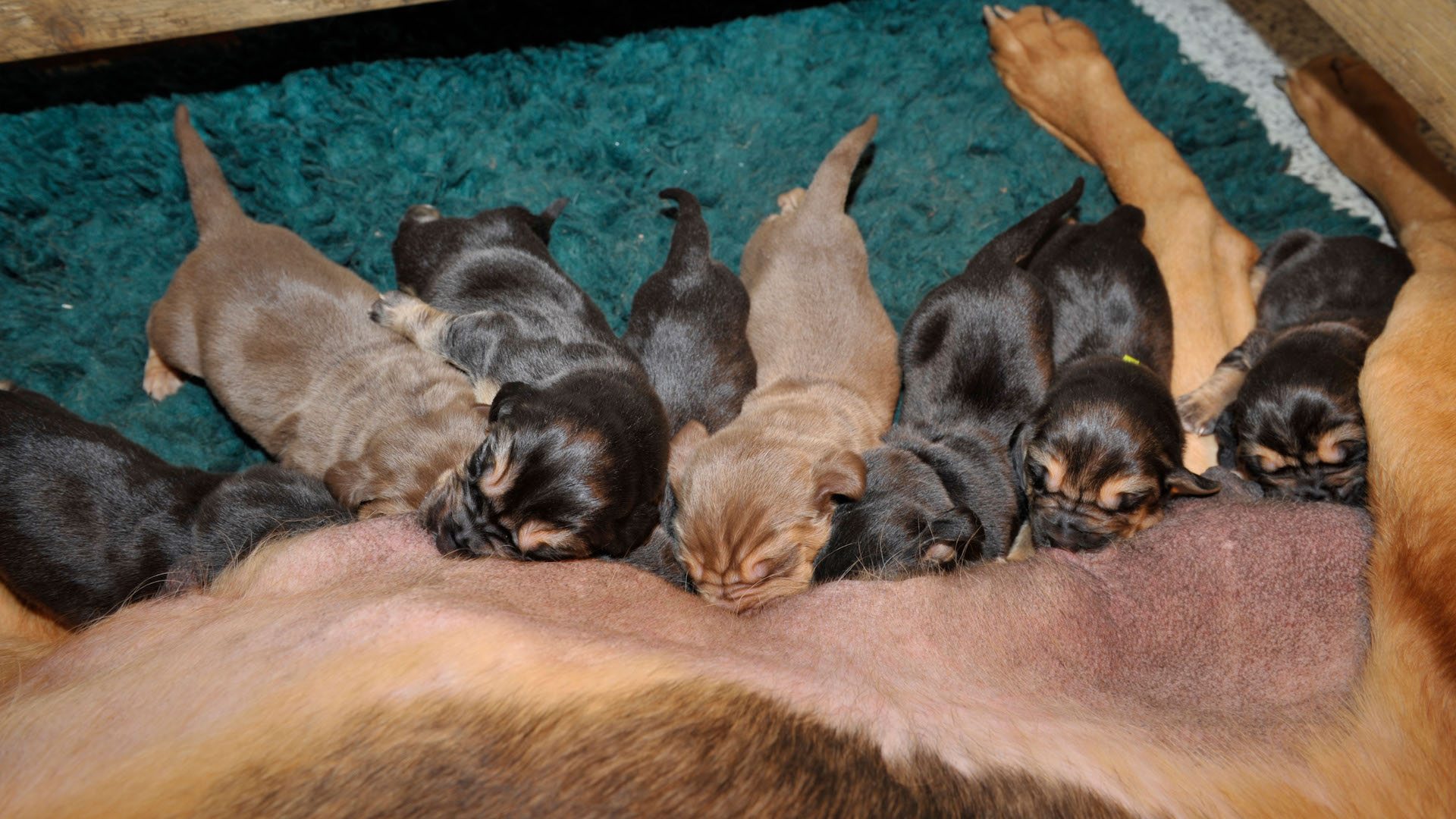
Bloodhounds only come in three colorways: black and tan, liver and tan, or red. (The UK Kennel Club also accepts solid liver). A small amount of white is permissible on the chest, feet, and tip of the tail.
7. Big beauties
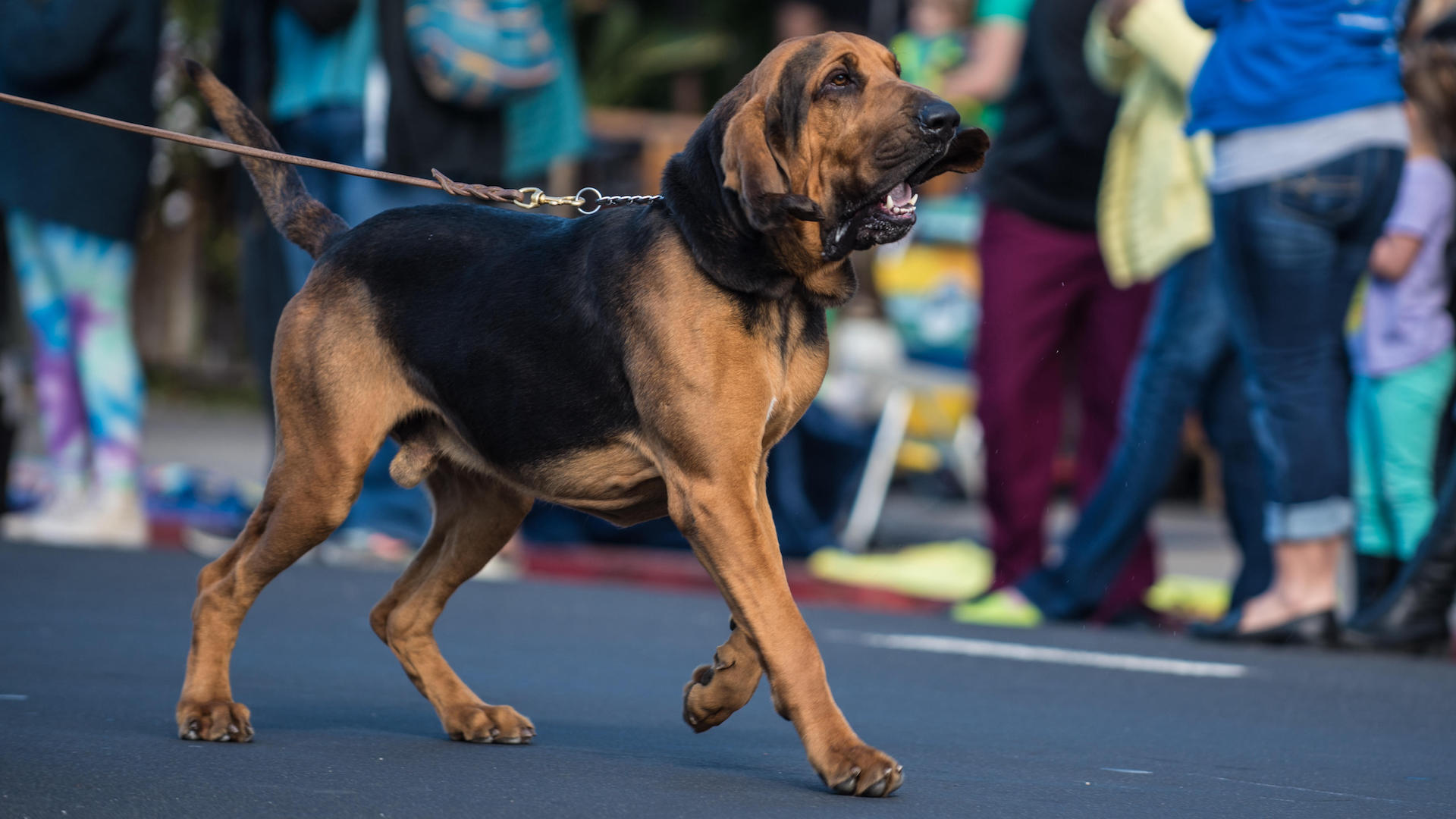
Bloodhounds are large. Adult male dogs can be up to 27 inches at the withers, and weigh as much as 100lb, putting them among the largest dogs in the world, but soft and docile in demeanor. Reading up on tips for caring for a large-breed dog would be beneficial if you are lucky enough to own this breed.
8. Unmatchable sniffing skills
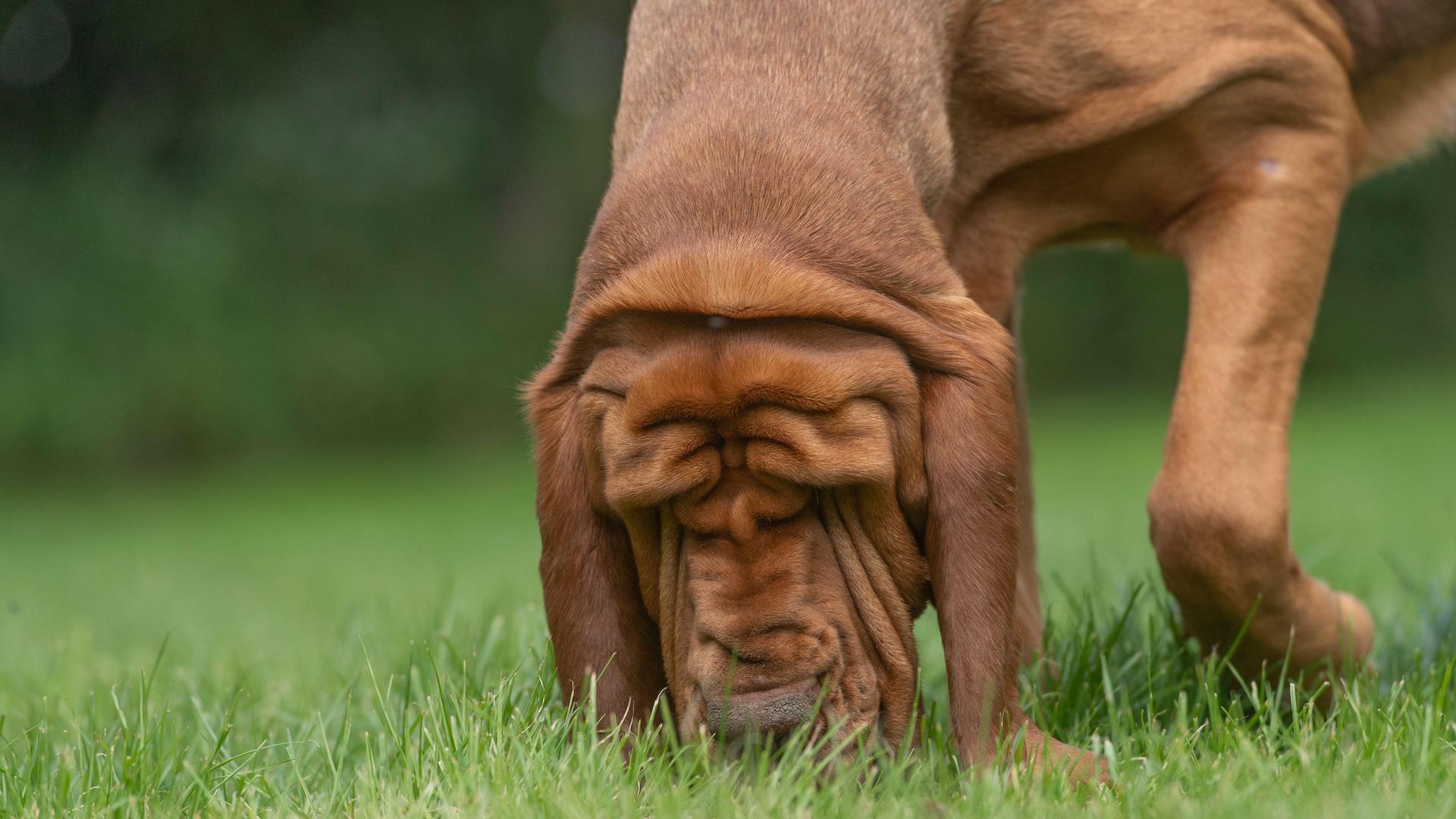
When it comes to scenting abilities, the bloodhound stands head and shoulders above the rest. They are said to have up to 300 million olfactory receptor cells in their nose, the most of any dog breed and about 40 times that of a human – making them about 1,000 times better at detecting scent than we are. It’s little wonder they’re one of the best dogs for tracking.
9. Tracking down old smells
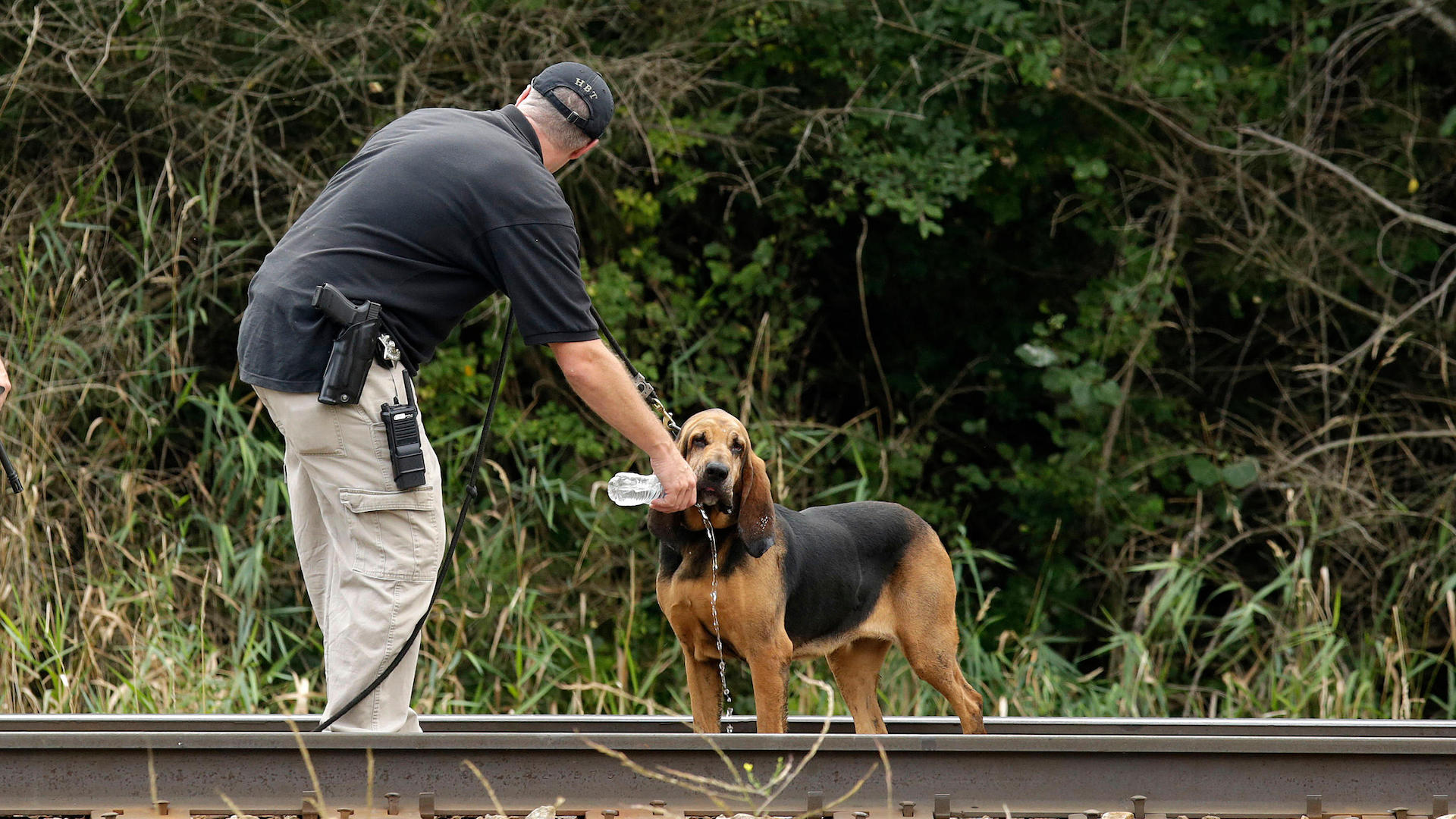
One of the reasons that the bloodhound’s evidence is permitted in a court of law is because they can follow a scent trail that is over 300 hours – or more than 12 days – old.
10. Not natural guard dogs
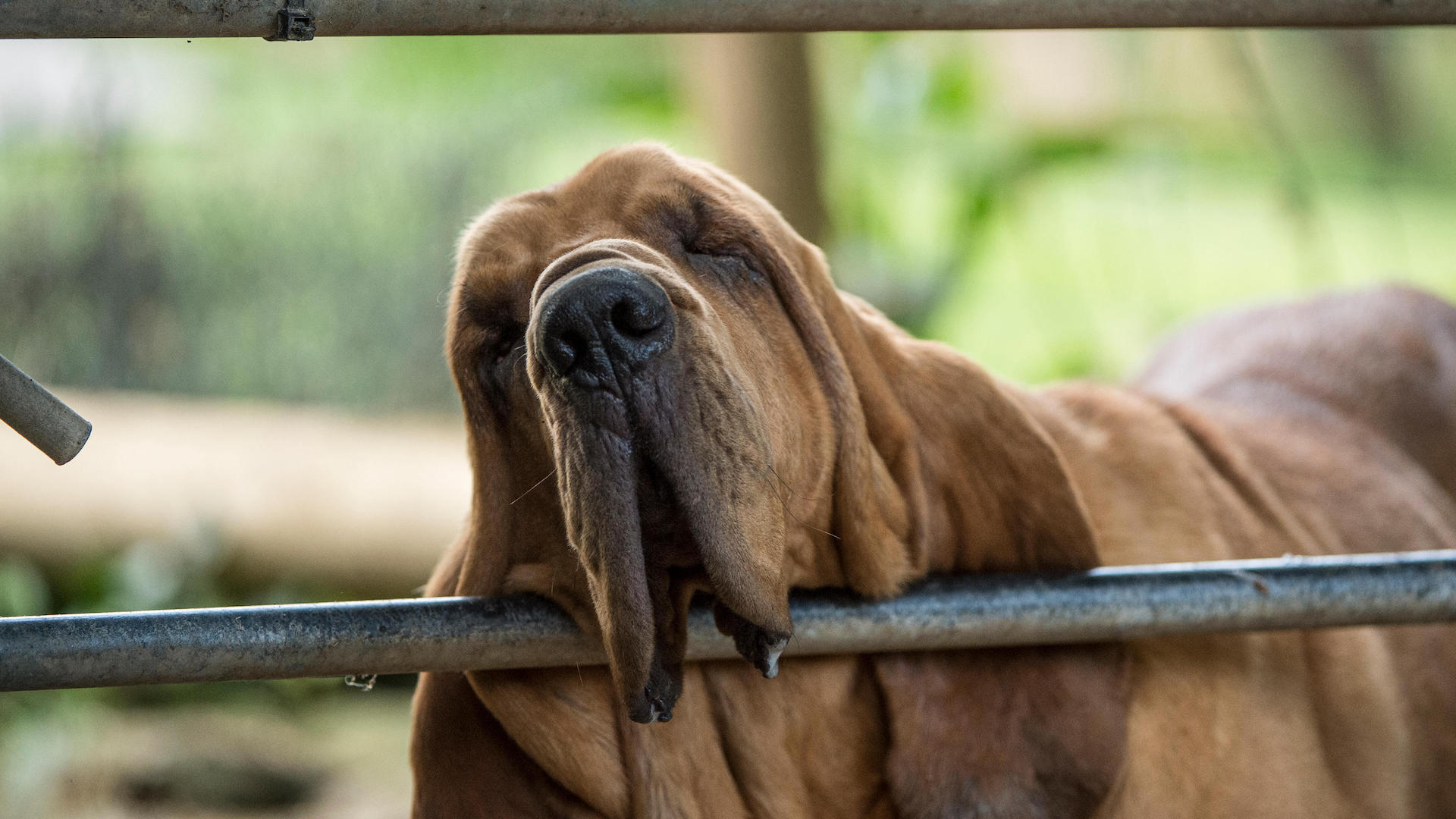
This breed would not make the list of best guard dog breeds. Bloodhounds may look imposing with their impressively large stature and solemn expression, but they are as useless as a guard dog as they are useful as a sniffer dog because they are simply far too friendly to humans.
11. A nose with a dog attached
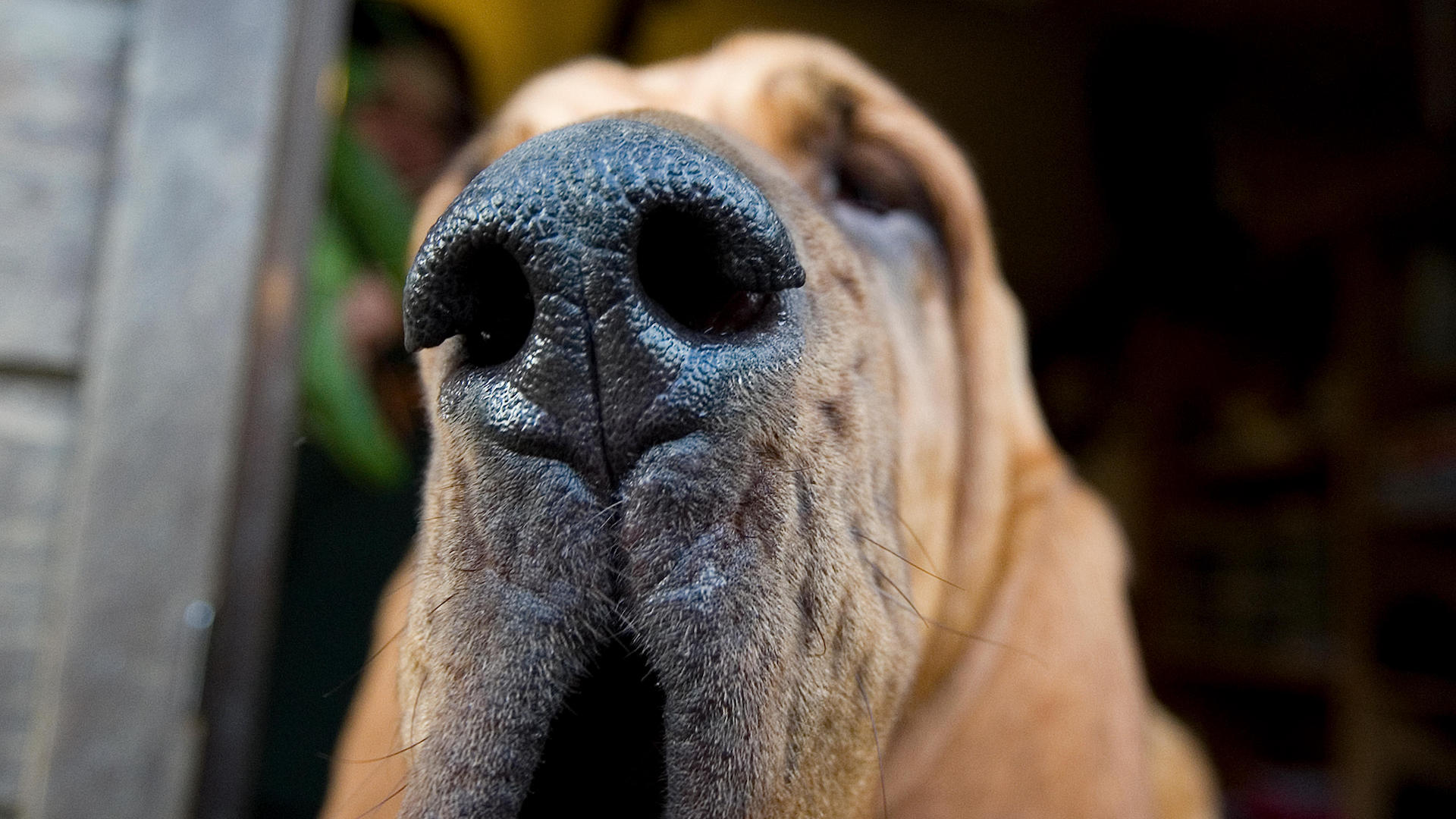
Due to their superlative scenting abilities, bloodhounds are sometimes referred to as a nose with a dog attached, because their nose is such an awesome feature – certainly this breed’s superpower.
12. Wise wrinkles
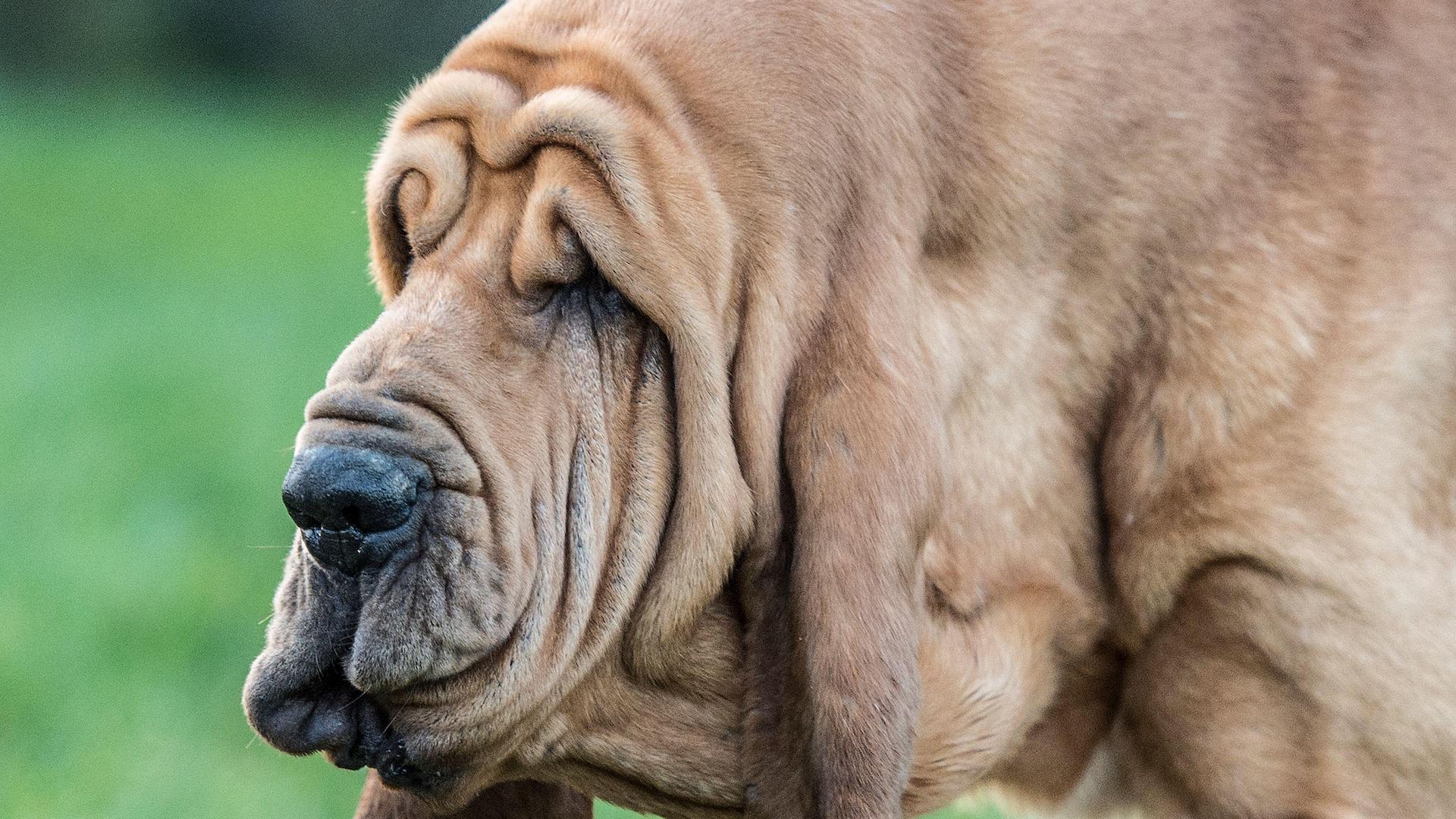
A bloodhound’s wrinkles are part of its charm – whether young or old. A distinctive feature is the loose, superabundant skin on their heads, which falls into pendulous folds and ridges down on their lips and even necks. This gives them a wise, dignified, and contemplative air.
Of course, these wrinkles are just aesthetic, not a sign of old age or too much sun! They help trap air and waft it towards their magical noses, adding to their extra-special scenting powers.
13. Super sensitive
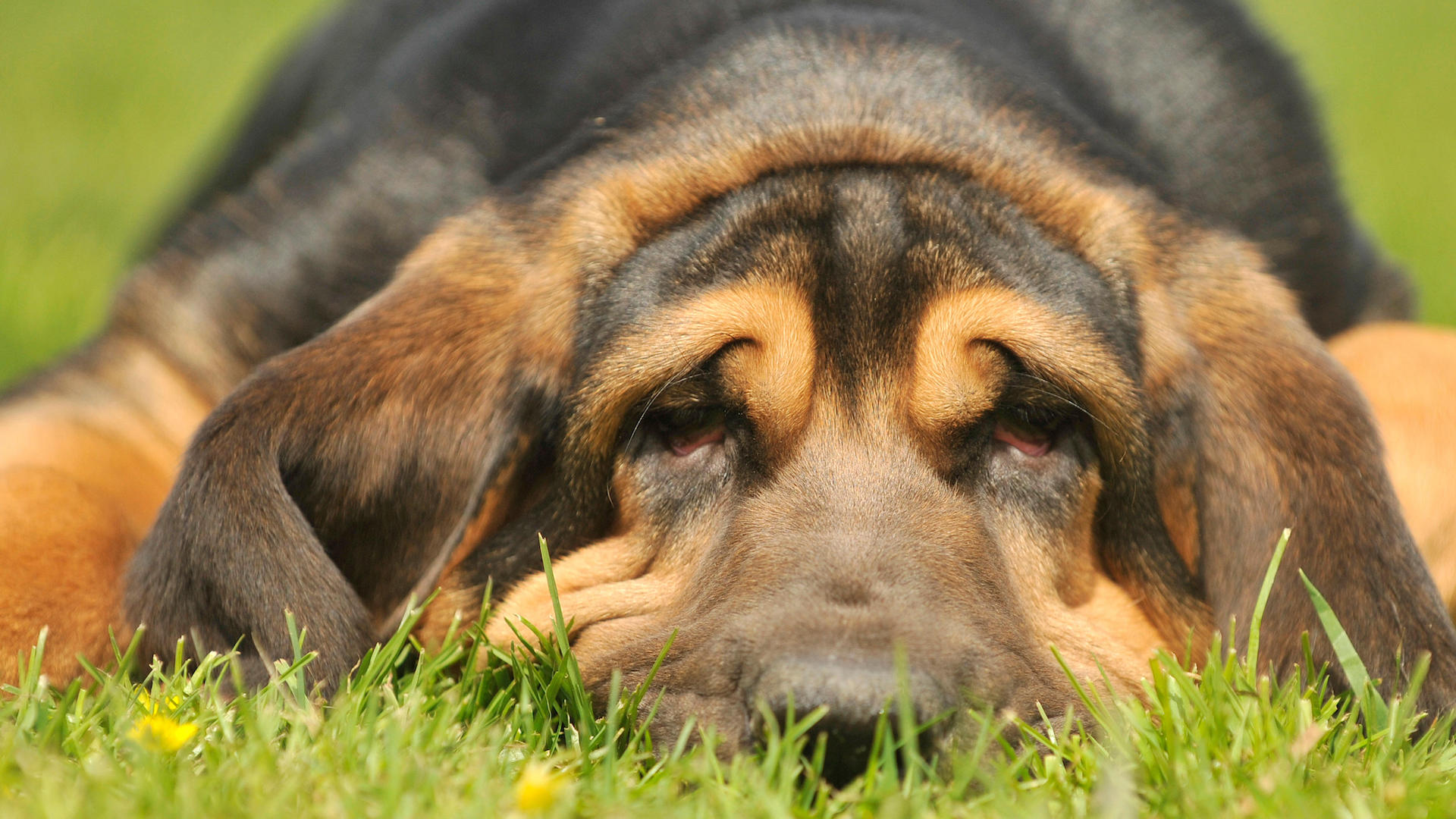
Bloodhounds may be large and involved in solving crime, but they are big softies inside. They hate to be told off, don’t like behaving badly and with such emotional facial expressions can let you know if they’re happy or sad. They thrive on pleasing their people and are loyal and selfless as dogs come.
14. Deceptively quick
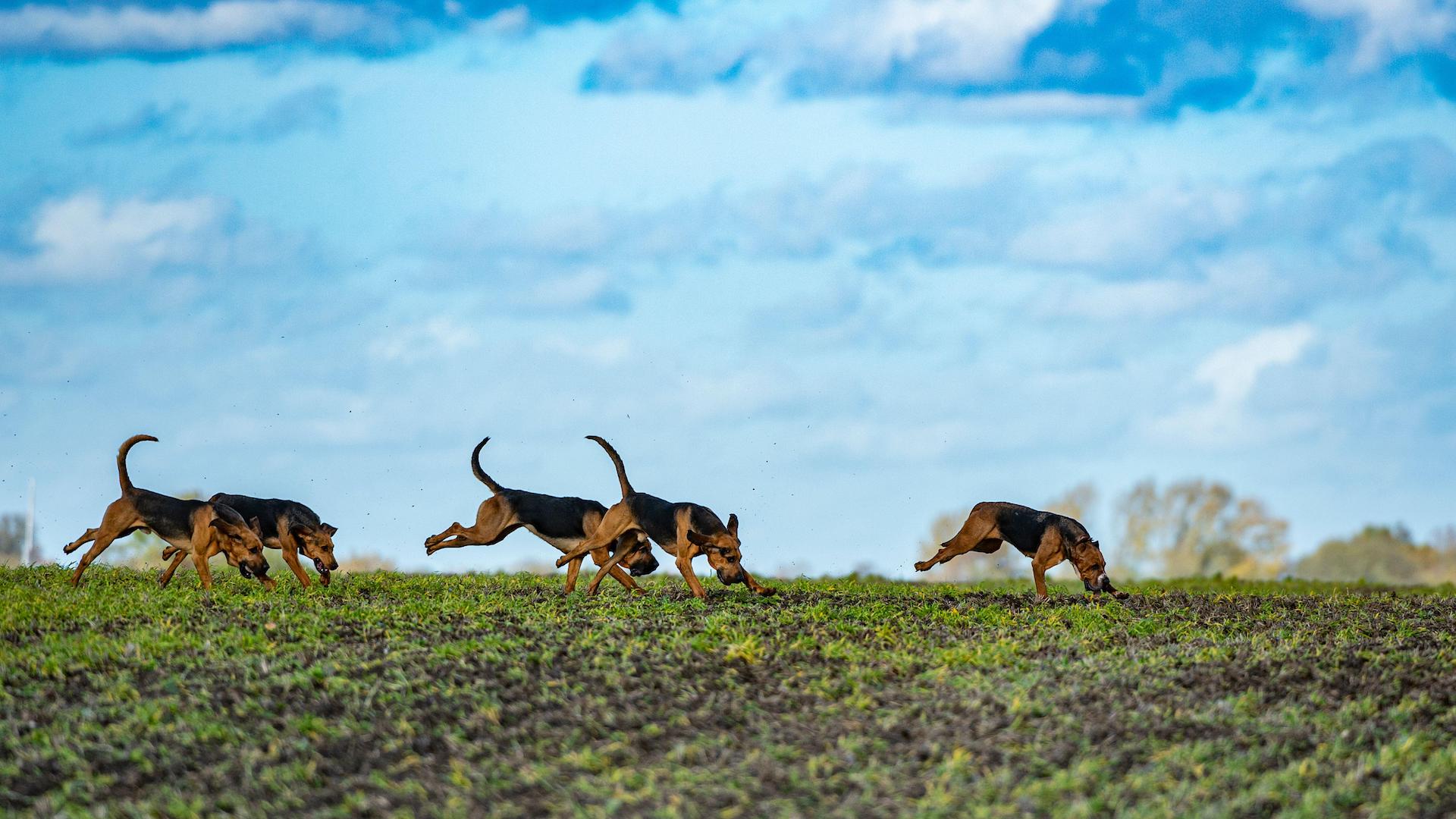
Bloodhounds may look clumsy and lumbering, largely due to their wrinkly faces and long ears, but these scent hounds are actually capable of great speed and endurance thanks to their strong legs, elastic gaits, and muscular bodies with well-sprung ribs for heart and lung capacity.
Bloodhounds are used to hunt the “clean boot” – the fresh scent of a runner – with riders following on horseback. On average, the hunt will cover up to 20 miles in three or four bursts.
15. Baying bloodhounds
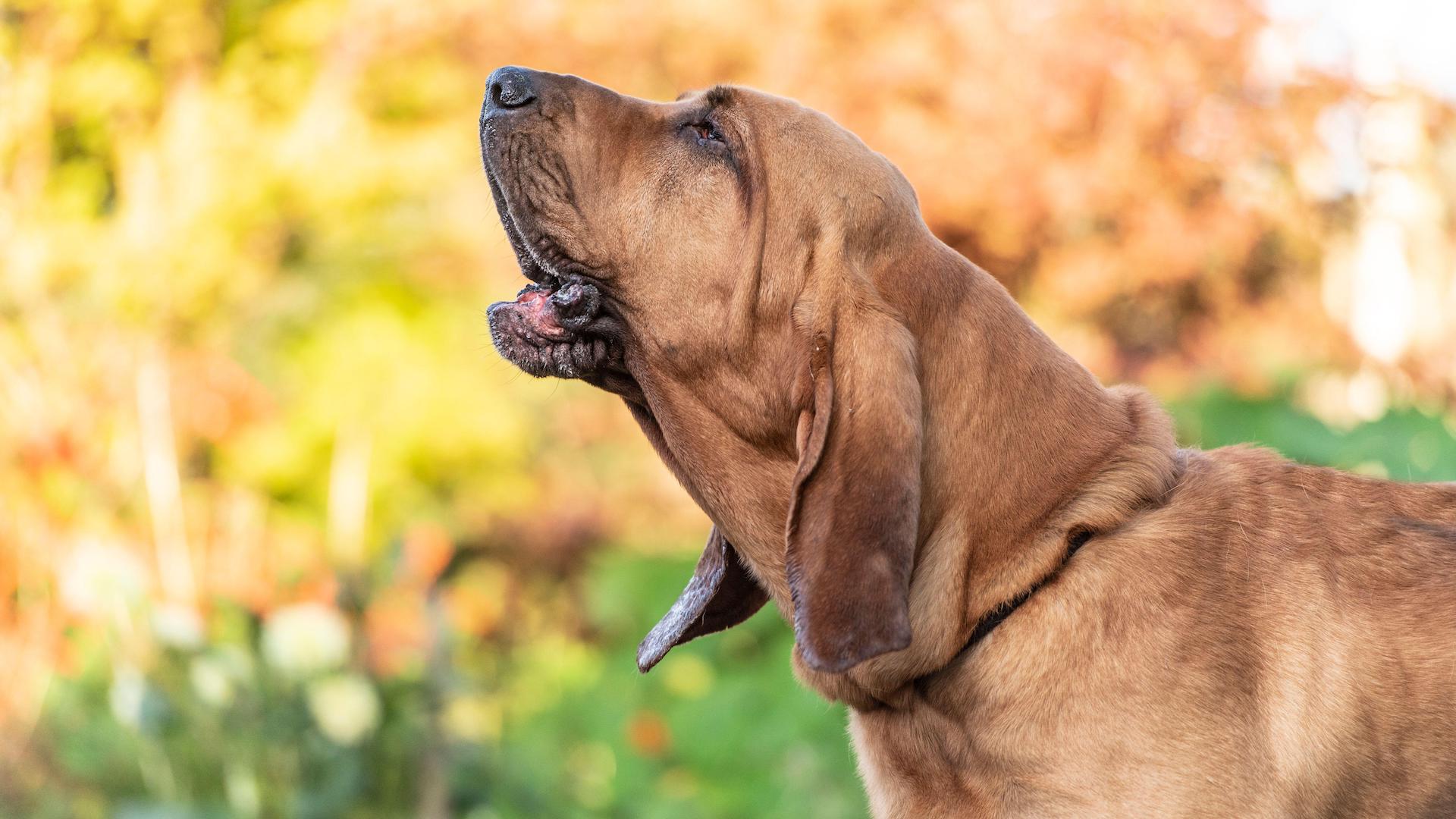
Bloodhounds are super-sensitive and somewhat reserved, but that doesn’t stop them using their deep, resonant bark – most particularly within a pack. The bloodhound’s baying – a melodious howl – is their most distinctive vocalization. It is ideal out in the hunting field, but less sociable in a private home with neighbors next door.
16. Long lives
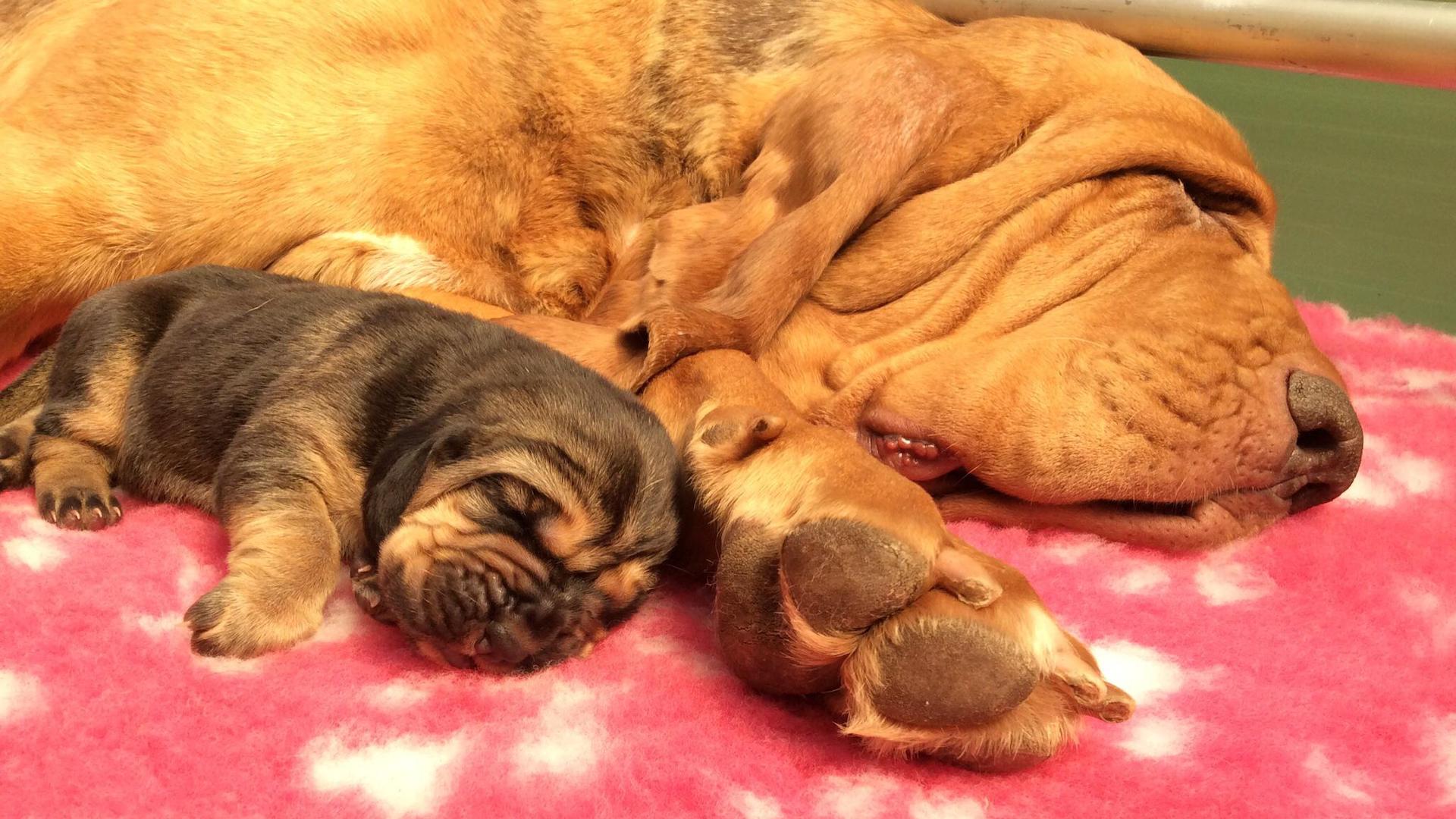
The saddest thing about owning a large breed is that typically the bigger the dog, the shorter their lifespan. Well, the brilliant bloodhound bucks the trend. They tend to live on average around 10–12 years, which is more what you’d expect from a medium-sized dog. Long live the bloodhound!
17. Long ears with a purpose
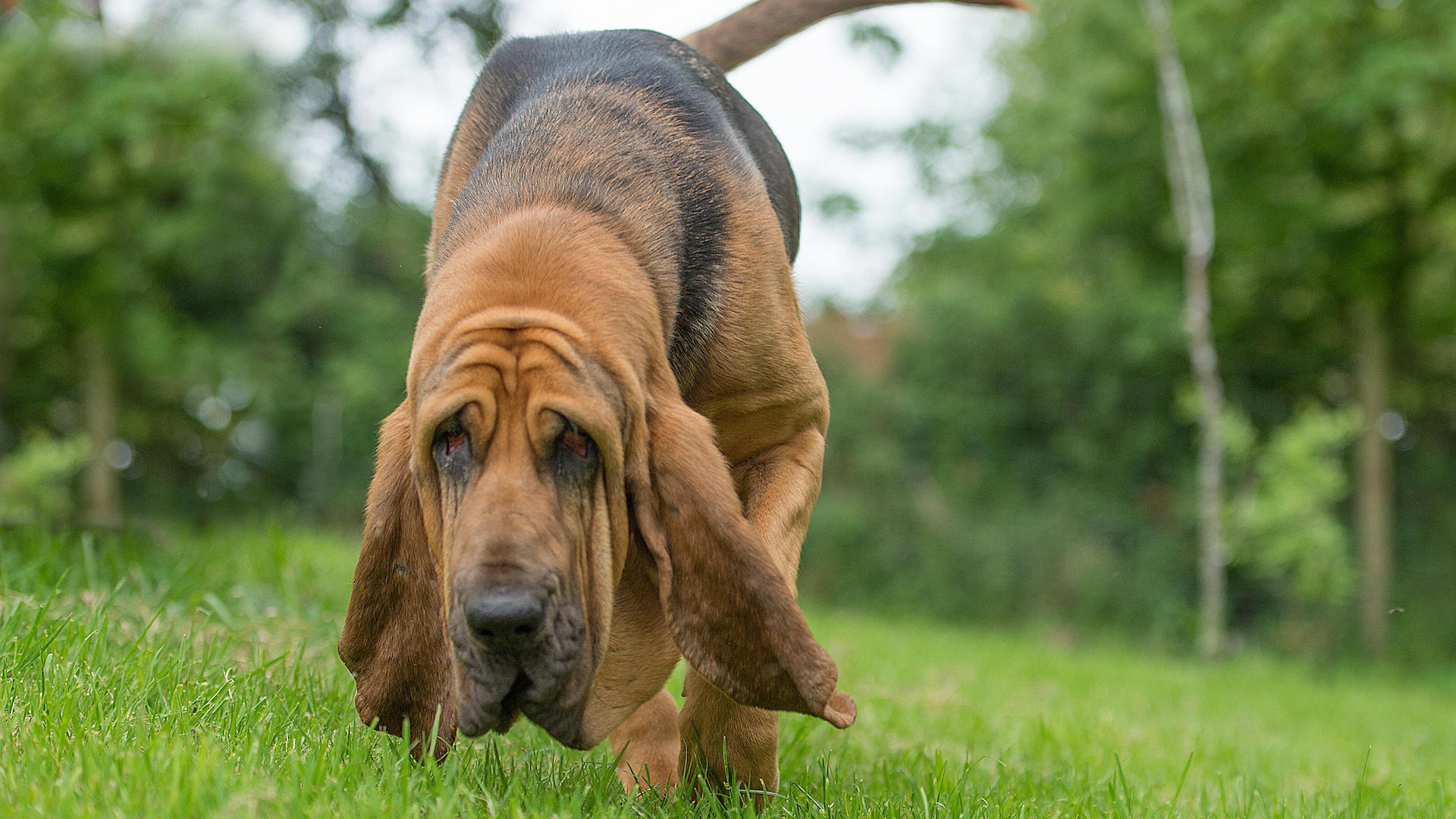
Those lovely long ears aren’t just there to look pretty. A basset hound’s floppy ears are designed to droop onto the ground, capturing and wafting scent particles toward their wonderful noses to do their bit.
The Guinness World Record for the longest ears belongs to a bloodhound named Tigger – 13.75 inches long. One fun fact about basset hounds is that they get their trademark ears from the bloodhound.
18. Cuddle bugs
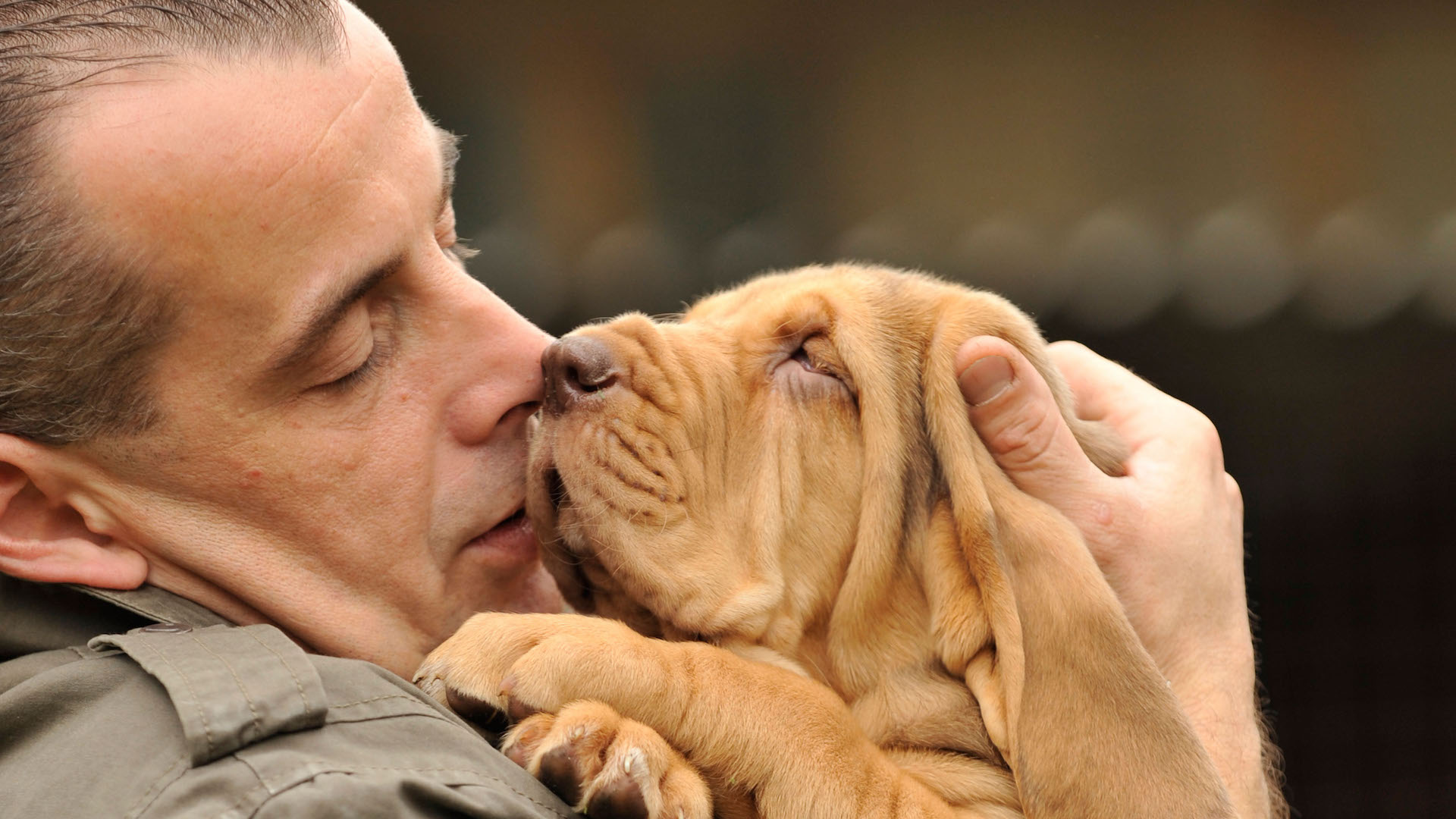
A dog weighing 100lb and taking up half the couch may not seem the obvious lap dog, but this is a breed that loves a cuddle. They are cozy, sensitive, loving, and affectionate and cherish nothing more than reciprocation from their favorite human.
19. Minimal grooming
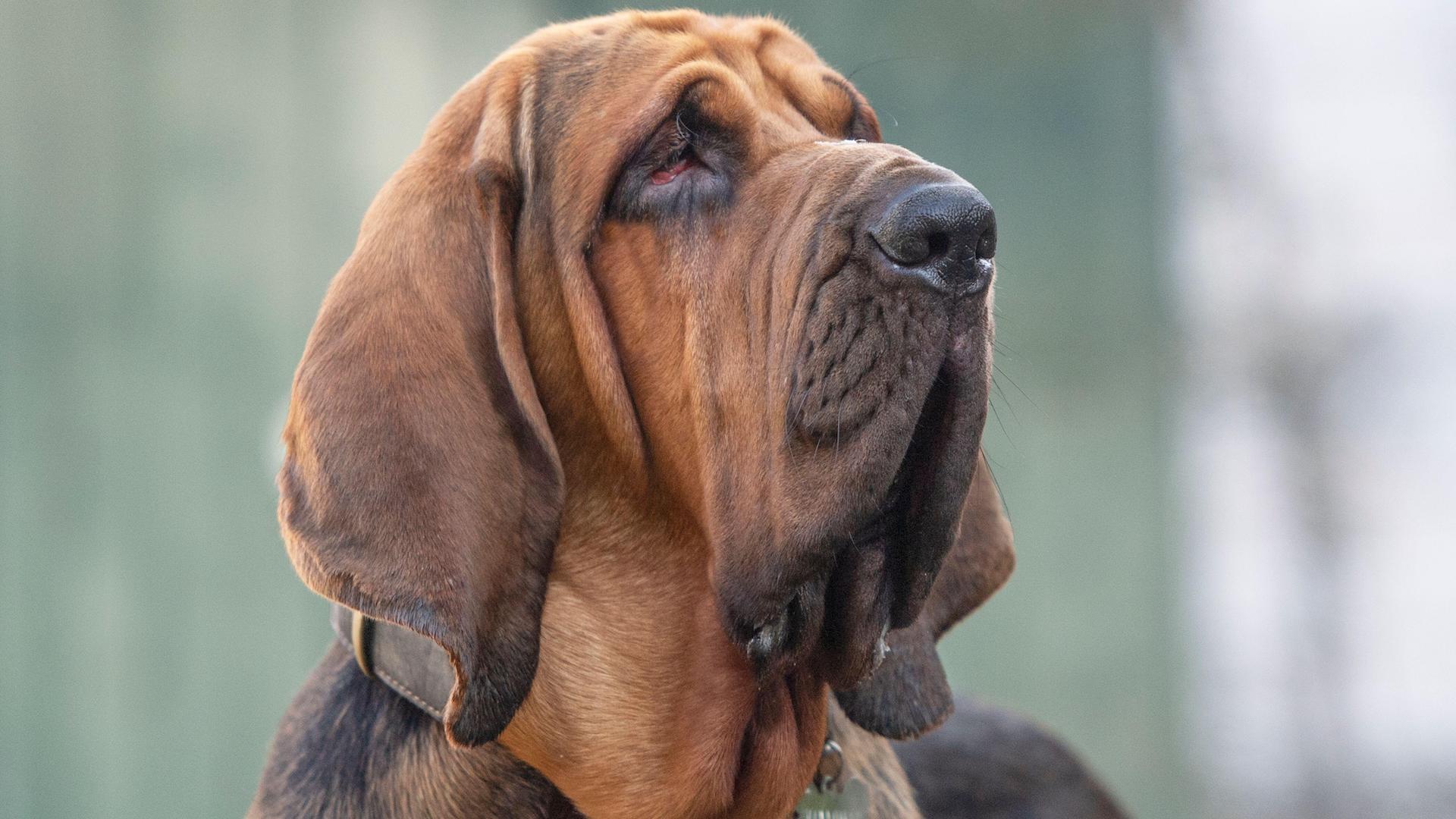
This is a boon for dog owners – especially given the surface area of a bloodhound’s skin. But their short, dense coat – although it does shed – needs little maintenance. Just a wipe with a damp cloth or one of the best dog brushes on a weekly basis should suffice. But you might need to get inside those wrinkles...
20. Rapid growth rate
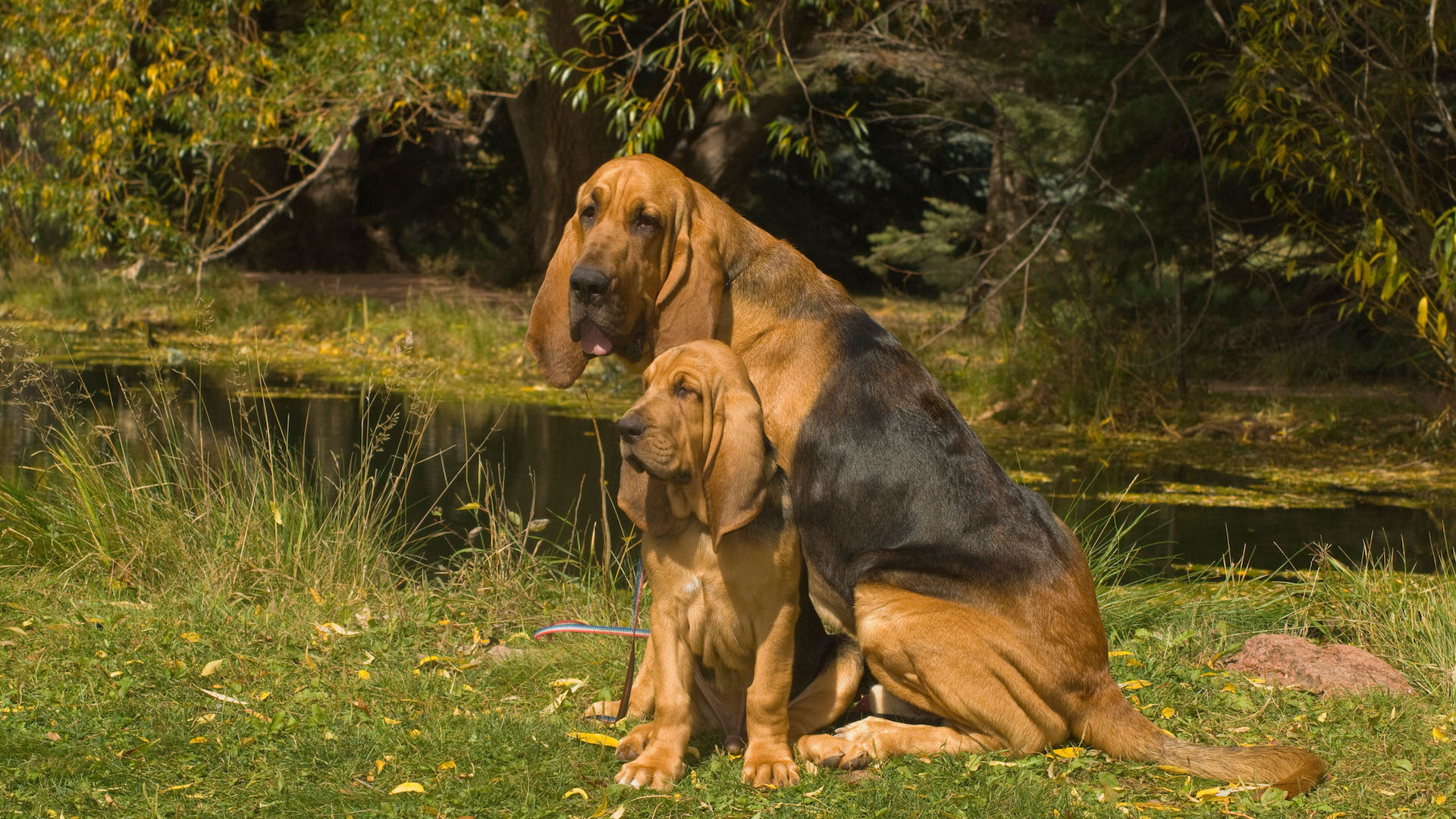
All puppies start small and cute, and the bloodhound is no different. But they have a rapid growth rate of around 3–5 lbs a week. They may reach their full height by 12 months but aren’t considered fully mature until 18–24 months.
It’s important to feed them a specific large-breed puppy feed to ensure they get the right nutrition to support them as they mature. It is also worth investing in one of the best large dog beds to give them a roomy place to relax.
21. Social animals
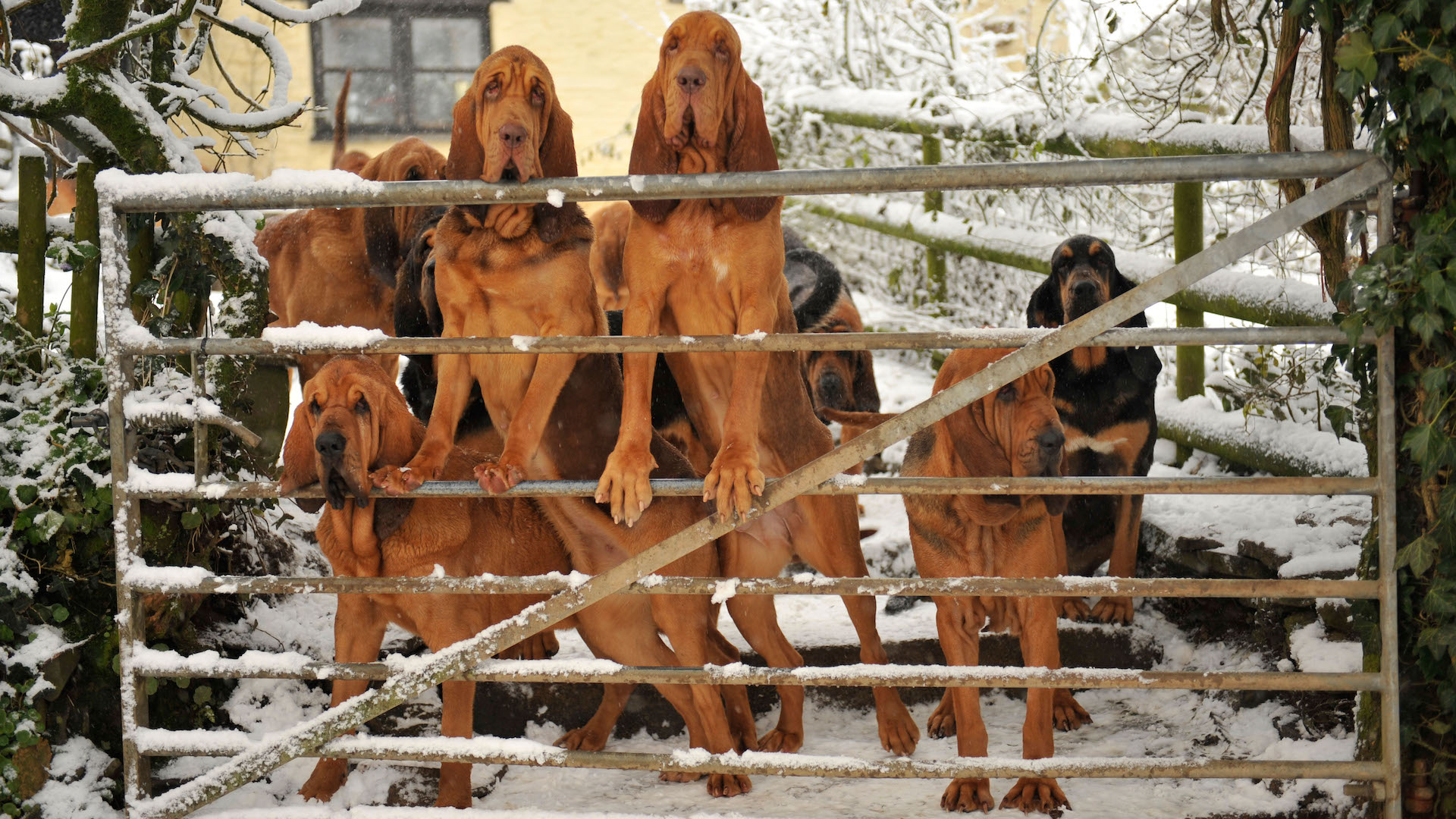
Bloodhounds do well in a pack. They need company and can get depressed if they are left alone. They thrive with other dogs, and people, to keep them company all day long. They are one of the dog breeds most likely to have separation anxiety, so it's best not to leave them alone for too long.
22. Blood by name not nature
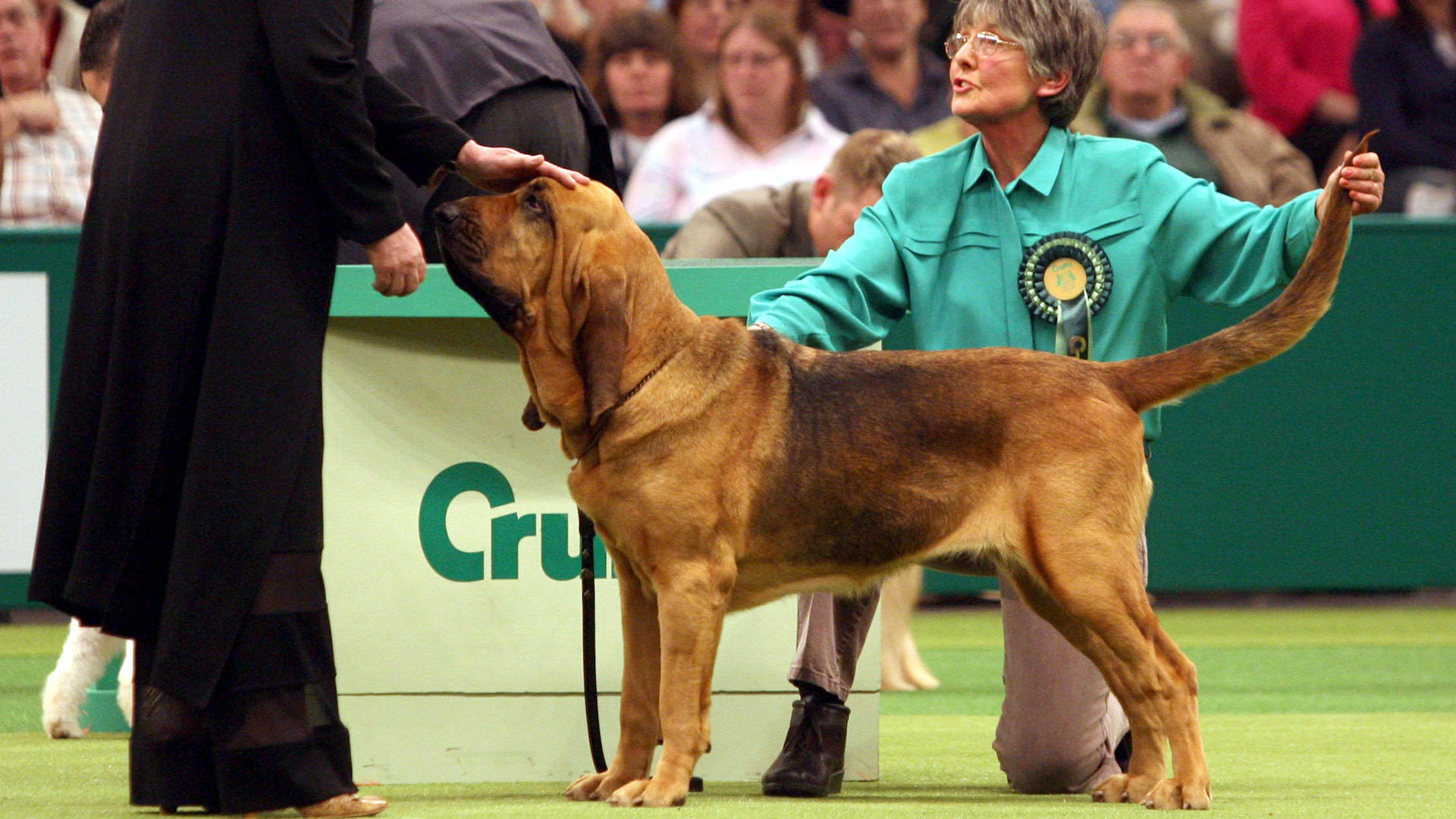
The name bloodhound has nothing to do with hunting to kill or drawing blood. It is believed in many circles to be a reference to their ancestry, where the original breeders worked hard to preserve the purity of their bloodlines. Just like in horse breeding, where a “blood horse“ is a thoroughbred, purpose-bred to race with specific bloodlines.
23. Exercise fiends
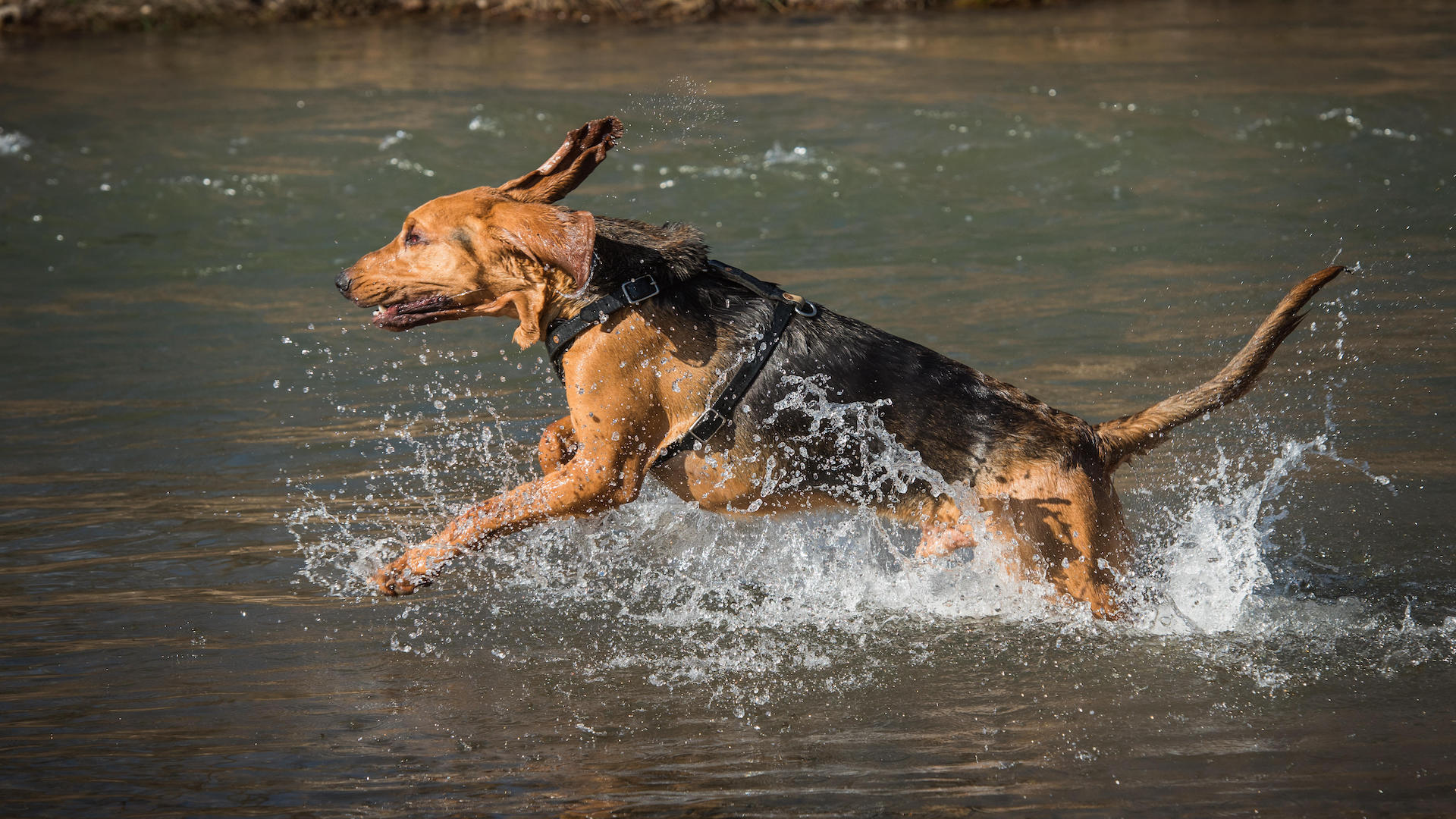
The bloodhound, with its dignified wrinkly face, jowls, and laid-back personality may give the impression that it‘s happiest lazing around on the front porch. However, the reality is that this is a hound bred to follow a scent for miles and miles. As such, they ideally need plenty of exercise and activity, as well as scent work to keep their natural instincts engaged.
Walks and runs are just one of the ways you can workout with your pet. So don't be afraid to get out and about with your bloodhound in tow.
24. A Disney favorite
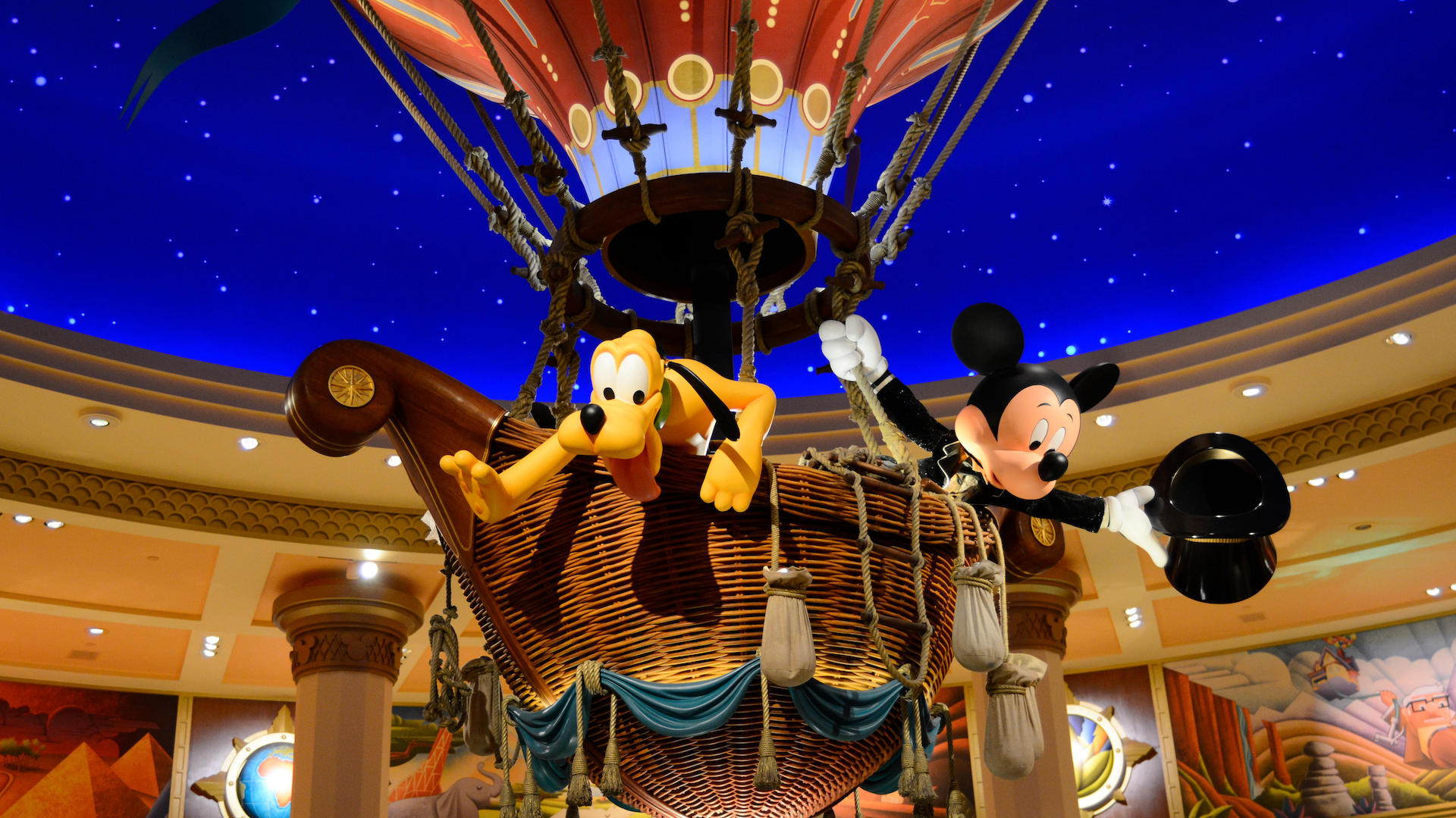
Walt Disney appears to have had a particular penchant for bloodhounds, with more of this breed of dog featuring in Disney classics than any other breed. For example Pluto in Mickey Mouse, Trusty in Lady & The Tramp, Copper in Fox & Hound, or Bruno from Cinderella.
25. Relatively short legs

For a large dog, bloodhounds have relatively short legs for a large breed, to enable them to keep their noses close to the ground to make the most efficient use of their scenting skills.
26. The first registered breed
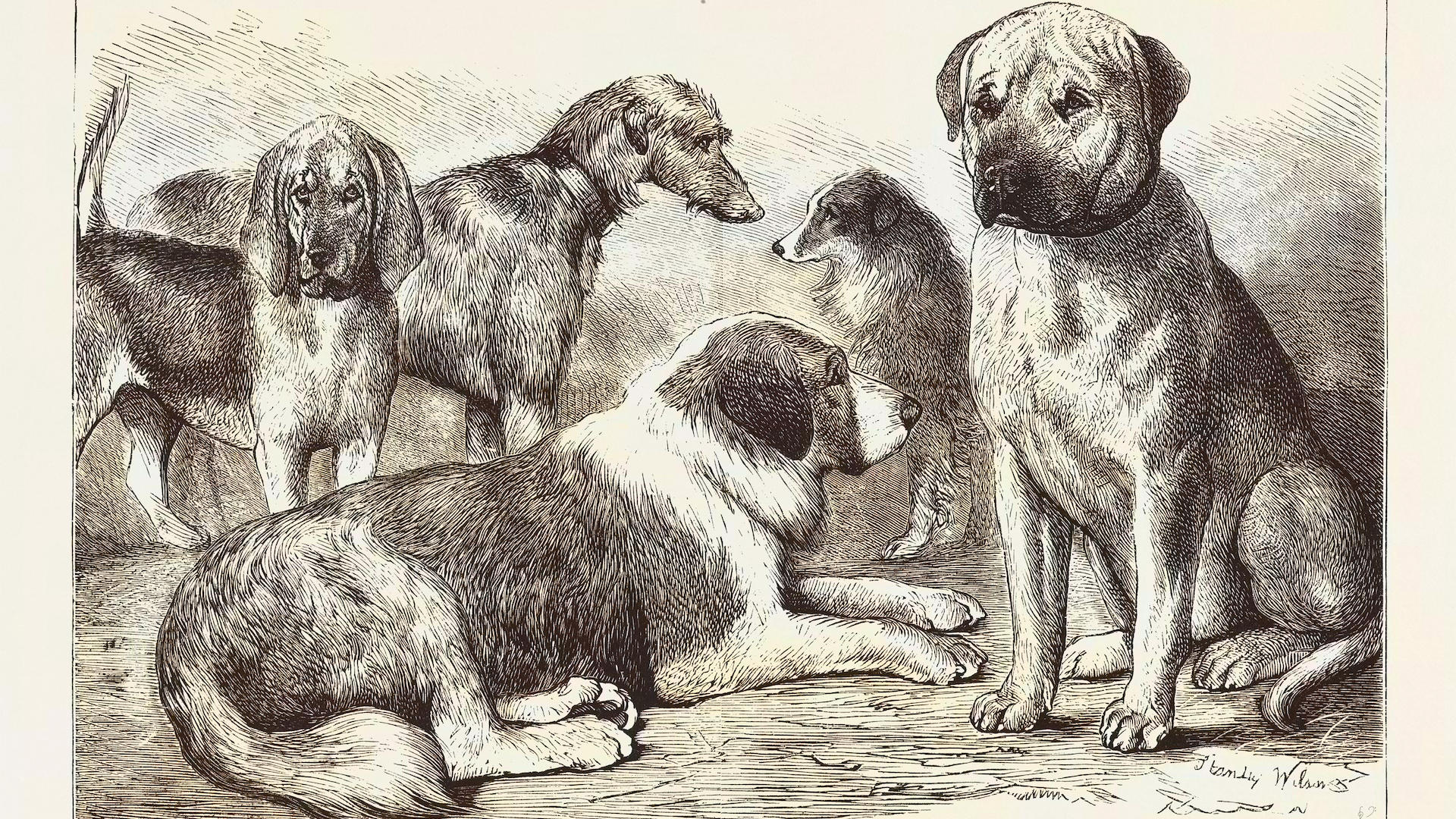
The first national kennel club, the UK Kennel Club, registered the bloodhound in 1873, their very first breed.
This doesn’t apply in the US, where the first registered breed was the English setter.
27. The first police dogs
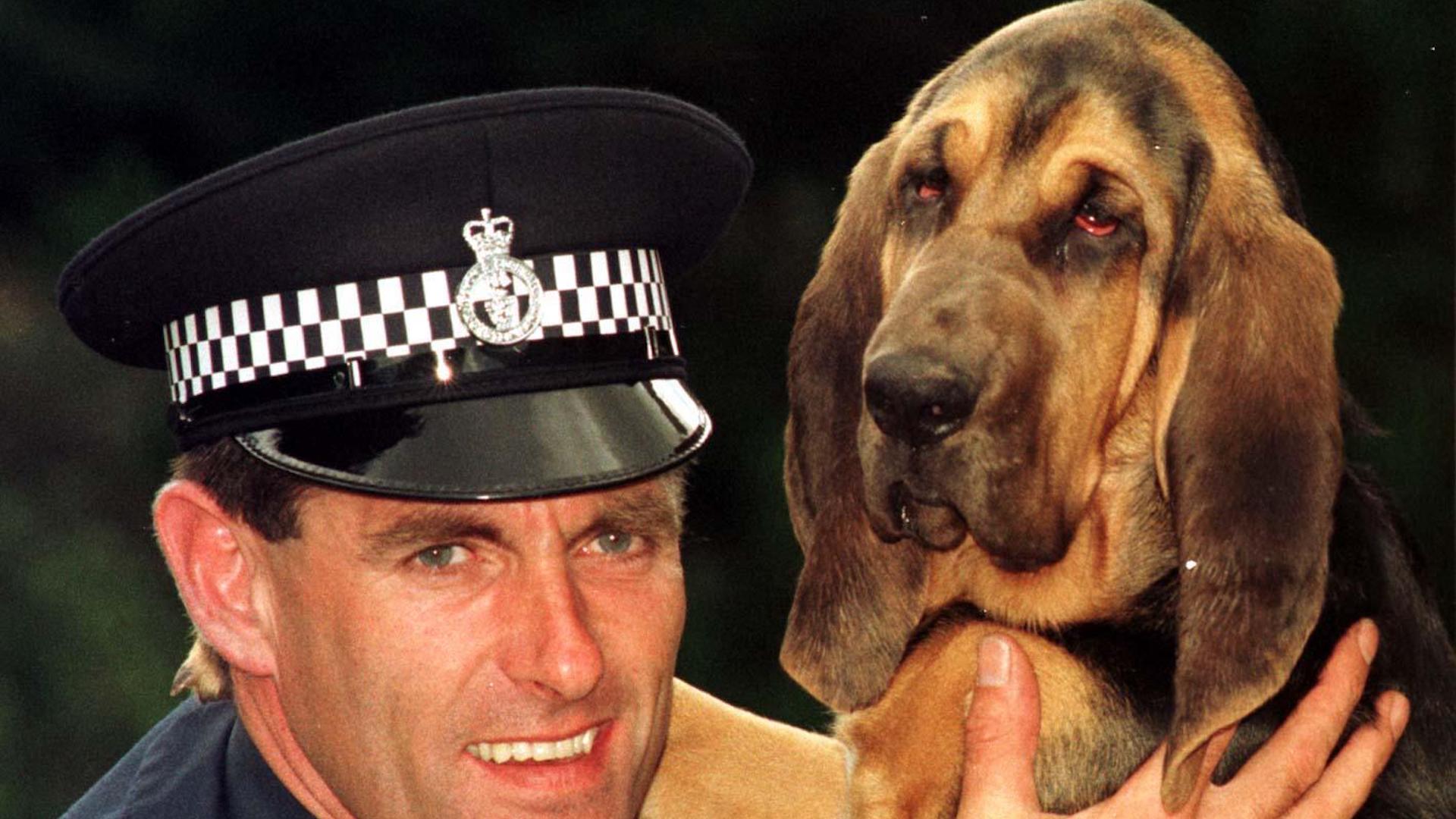
Bloodhounds were the first breed to be introduced into the Police force, with the aim of catching an infamous serial killer. Back in the 1880s, Jack the Ripper was on the loose in London, and although dogs had yet to be used by the police, they used them as a last resort to try to track down the killer. Alas, it didn’t work due to inexperience in handling dogs in this guise, but it did initiate the practice.
28. Not so smart
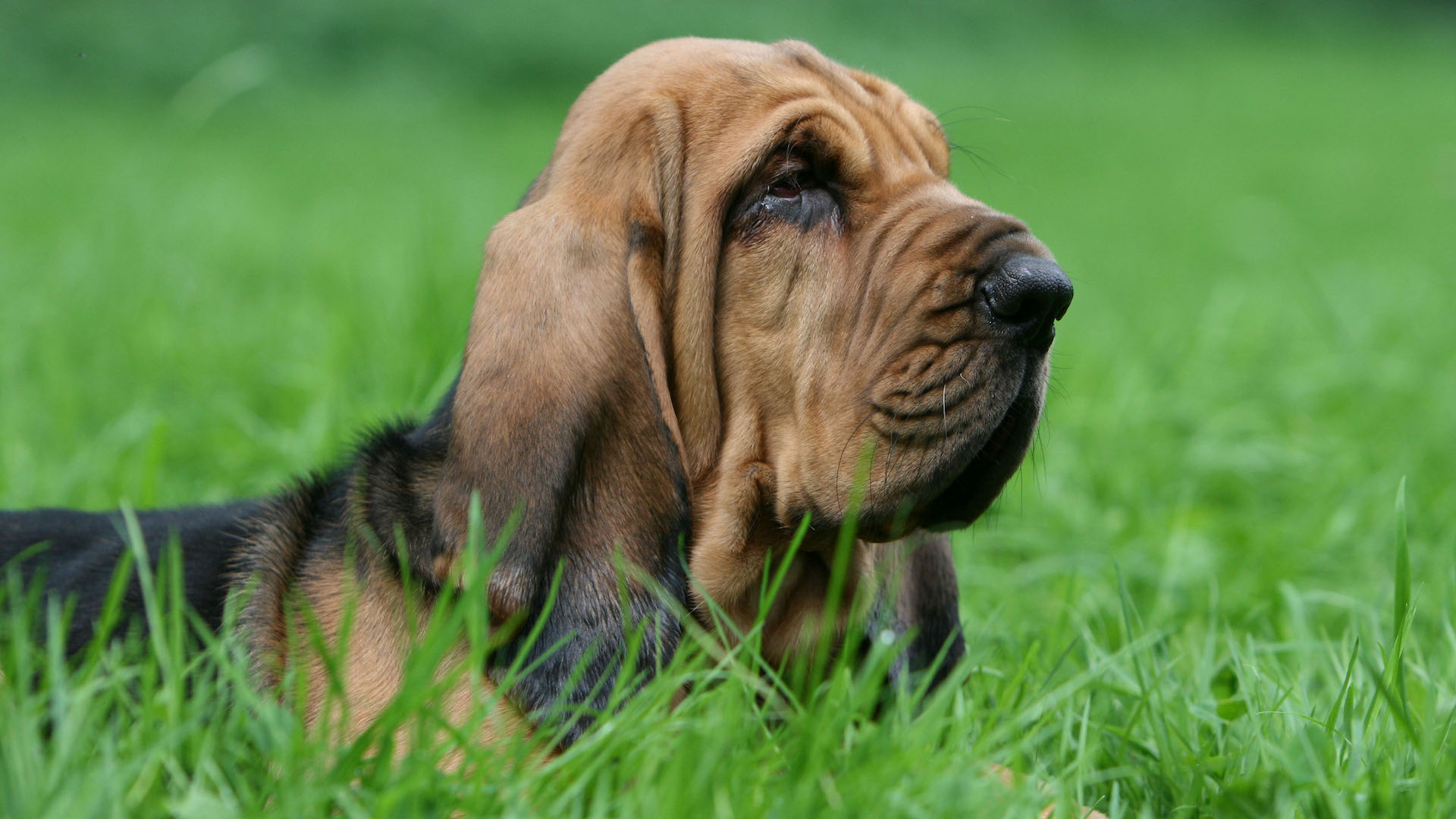
According to Stanley Coren’s intelligence dog trials, the bloodhound fares very poorly, at 133rd out of 138 breeds tested. However, while they might not be one of the smartest dog breeds, they’re not a dumb dog. When it comes to their scenting ability they’re top of the class, but possibly because of their focus when it comes to their nose, they are distracted when it comes to other measures of obedience and learning commands that seem less relevant to them.
They’re just not trick dogs – they have enough of a talent without needing to show off!
29. A vulnerable breed
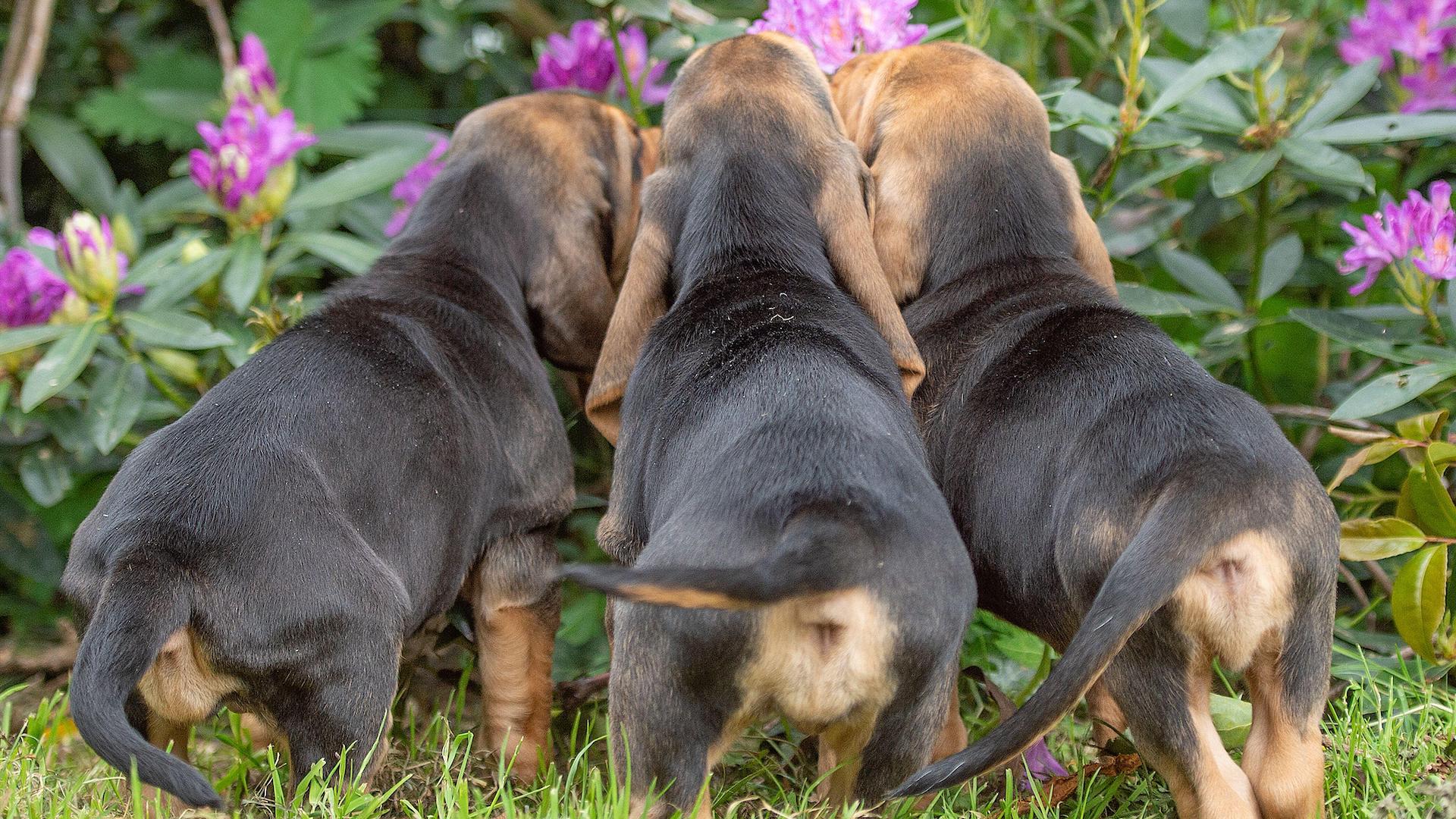
Although the bloodhound was highly valued as an aristocratic breed in times gone by, their popularity is dwindling. The UK Kennel Club put them on the list of vulnerable native breeds, with only 54 pups registered in 2023, which means they are at risk of extinction.
30. Multi-purpose hunters
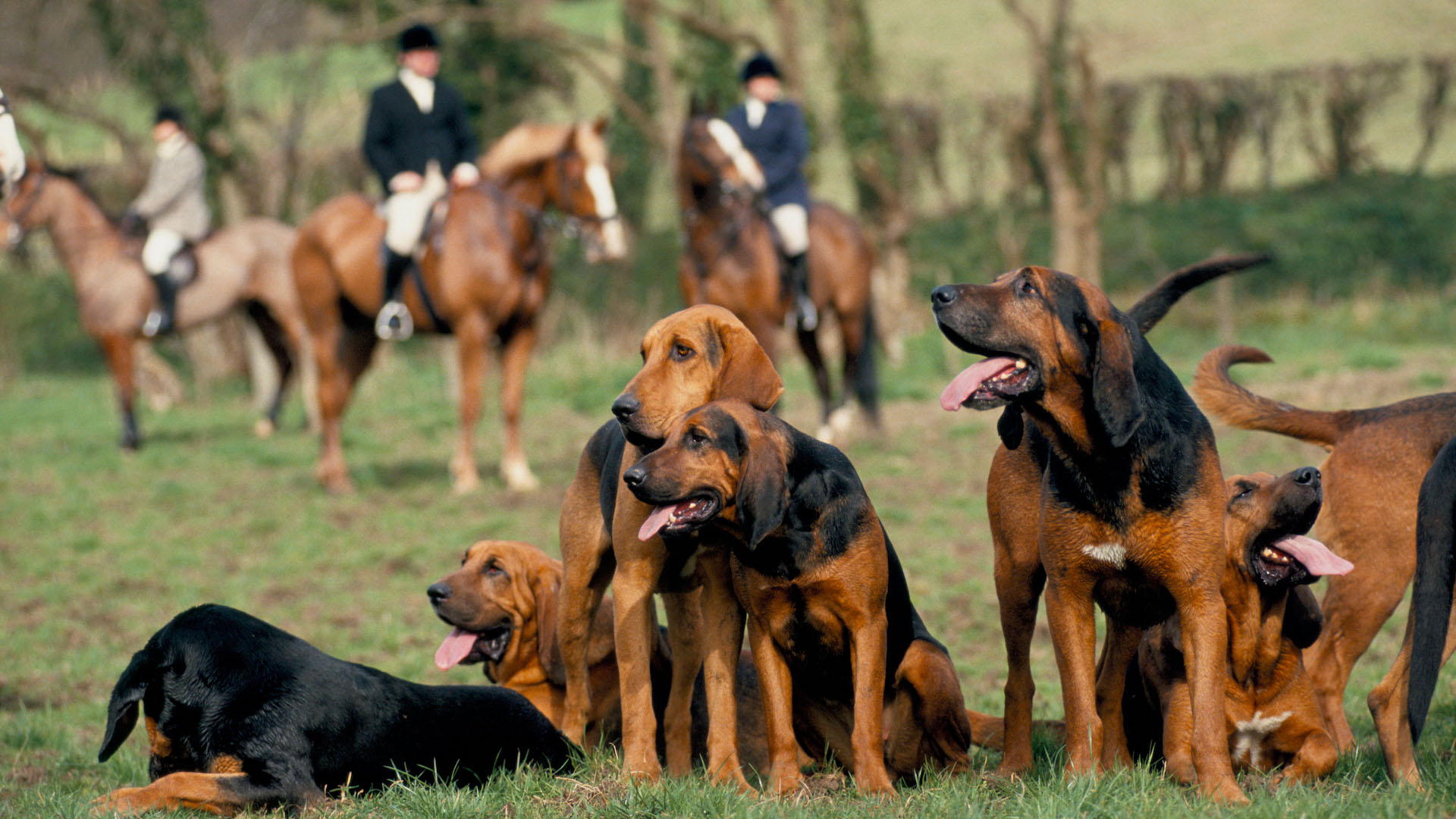
In their time – which has spanned most of a millennium, the bloodhounds have been used to track deer, wild boar, humans, lost children, missing persons, the “clean boot” – and even hunted down raiders and cattle thieves. How’s that for a multi-purpose dog?
31. Watch out for the tail
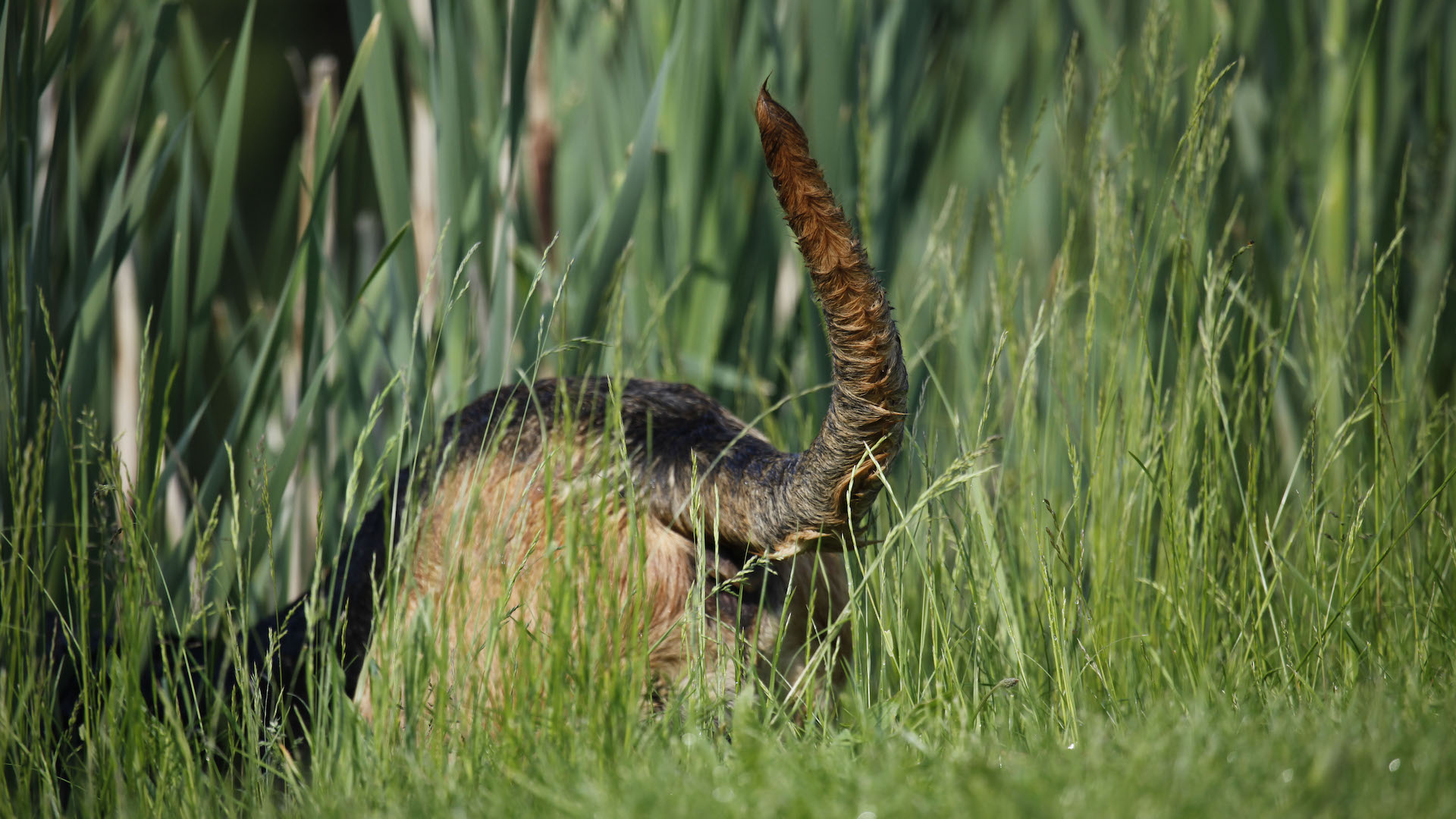
A bloodhound’s tail is long, strong, held high, and wags exuberantly. Due to their height, you’ll find that tail quickly clears everything in its wake, whether that’s mugs on a coffee table, China ornaments, or even small children. But never on purpose.
32. Selective focus
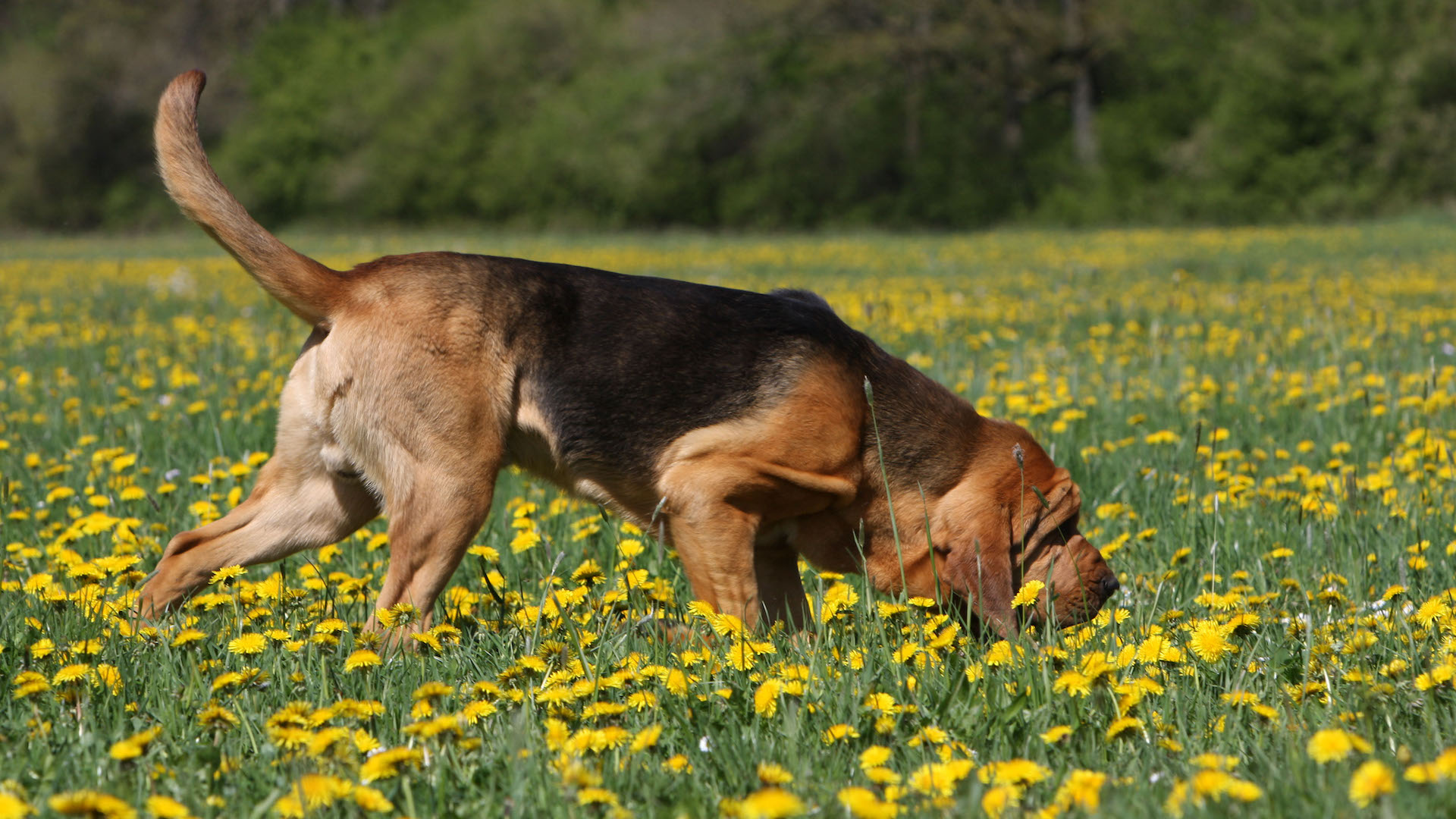
Bloodhounds have one job, sniffing. They tend to have a short attention span when it comes to any other task, such as learning commands, recall, polite leash-walking, and basic obedience. However, when scenting is the required job, they will give you their absolute all, day and night, mile after mile, until the task is complete.
Love facts? Here are some interesting dog facts to wow and impress your friends!
Martha is an experienced journalist working in both print and digital media. She specializes in the canine, equine and rural sphere where she has covered a wide range of topics from cloning animals and the ingredients for a perfect yard dog, to helping owners find the best canine GPS trackers on the market. When she’s not busy writing about dogs and horses, she’ll be found either aboard a horse or looking after the menagerie of pets in her care.
